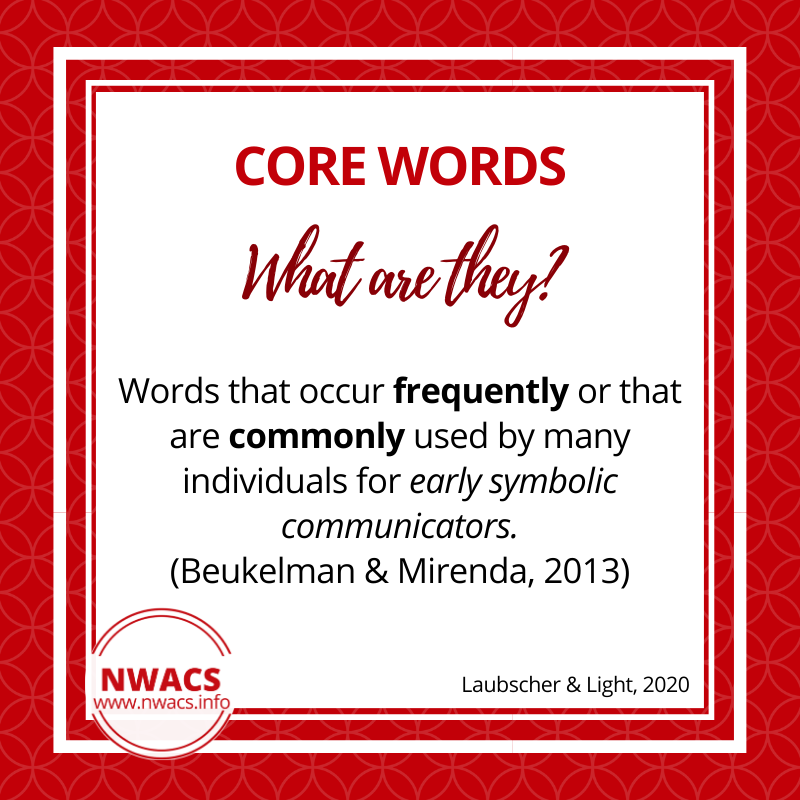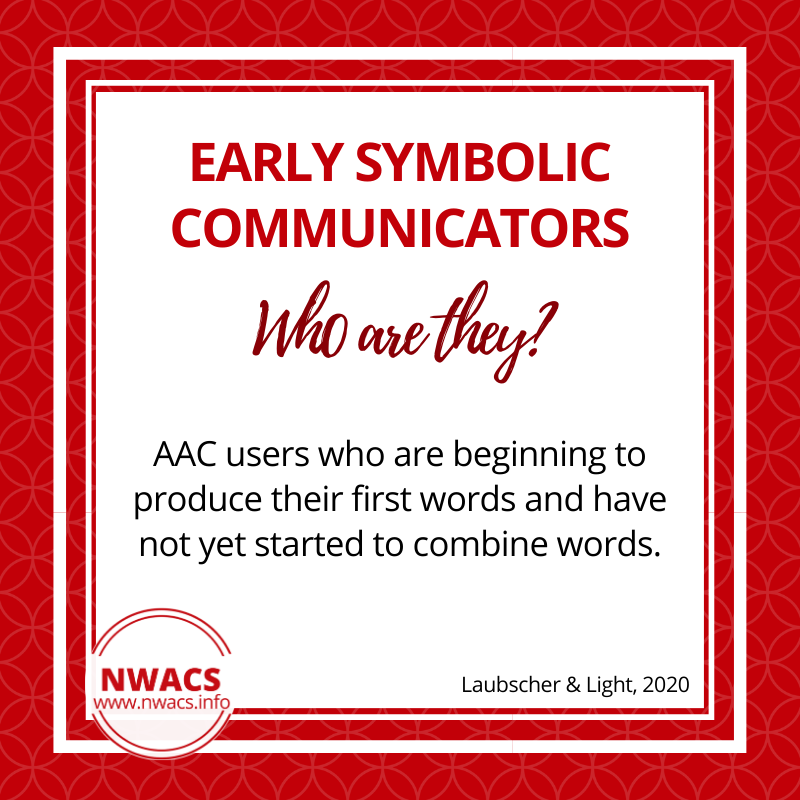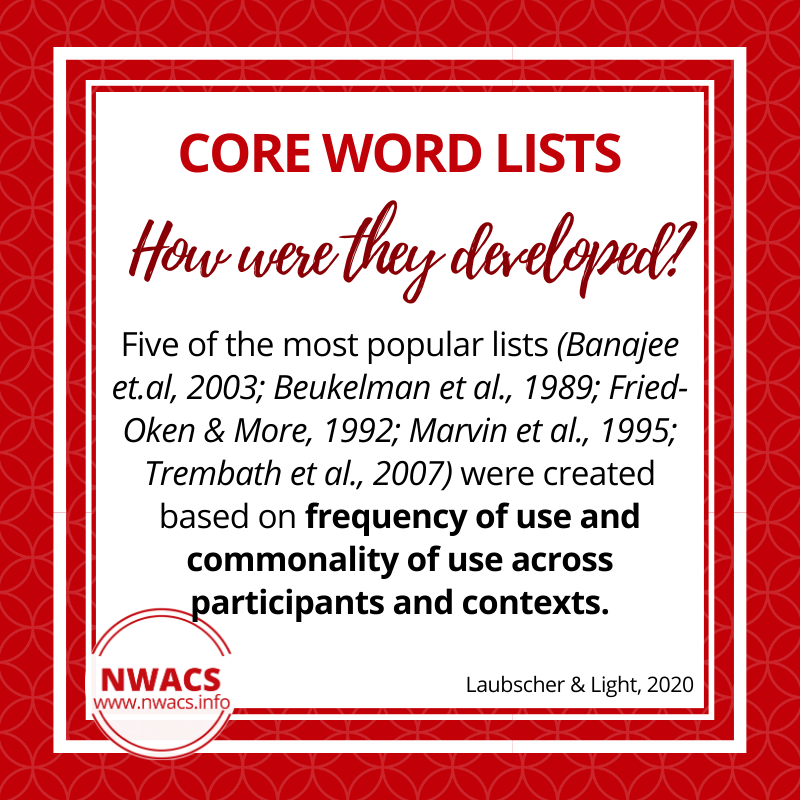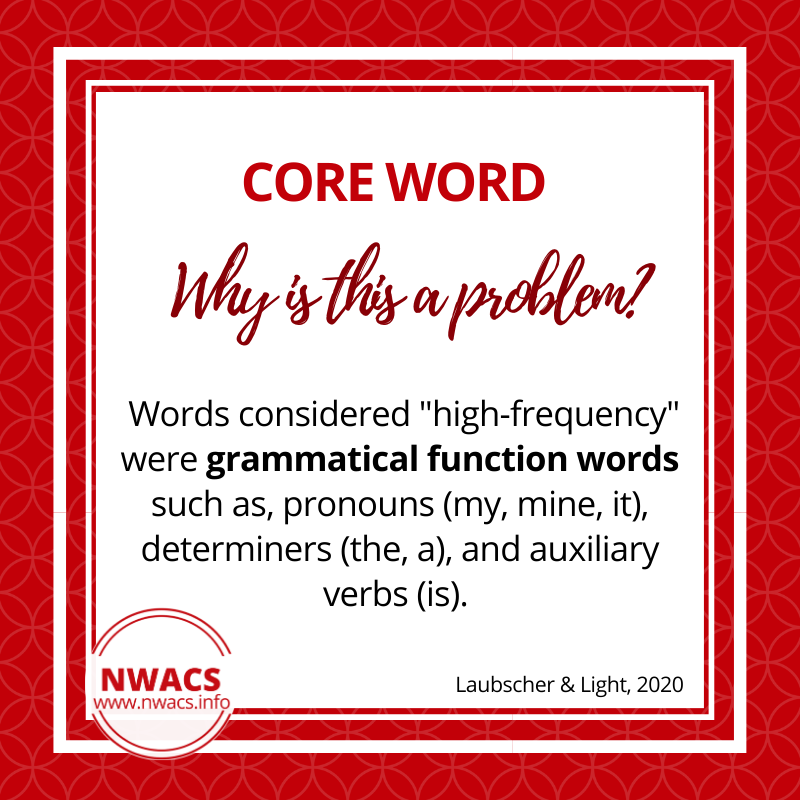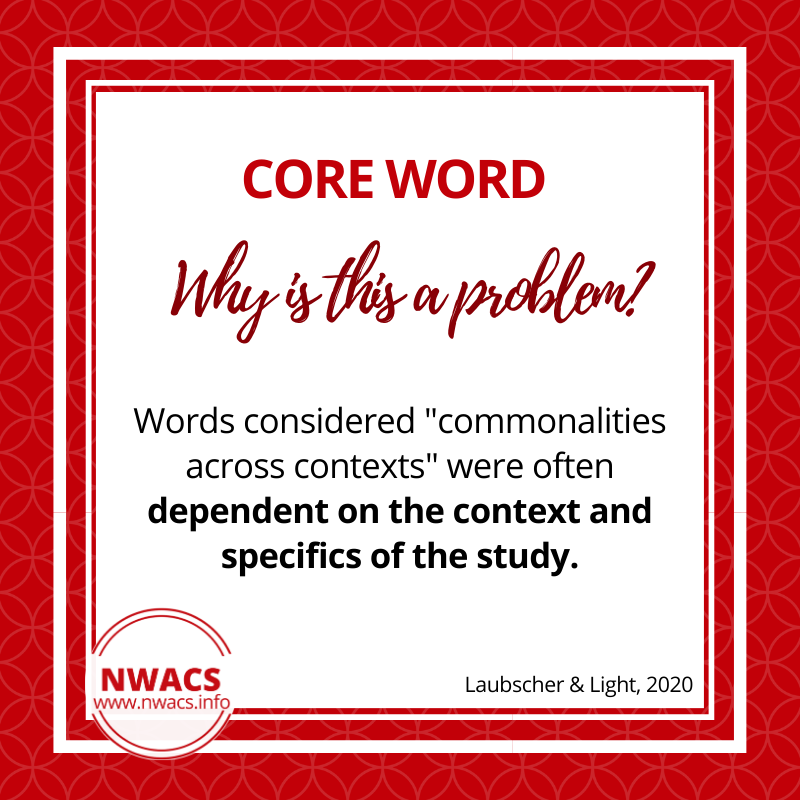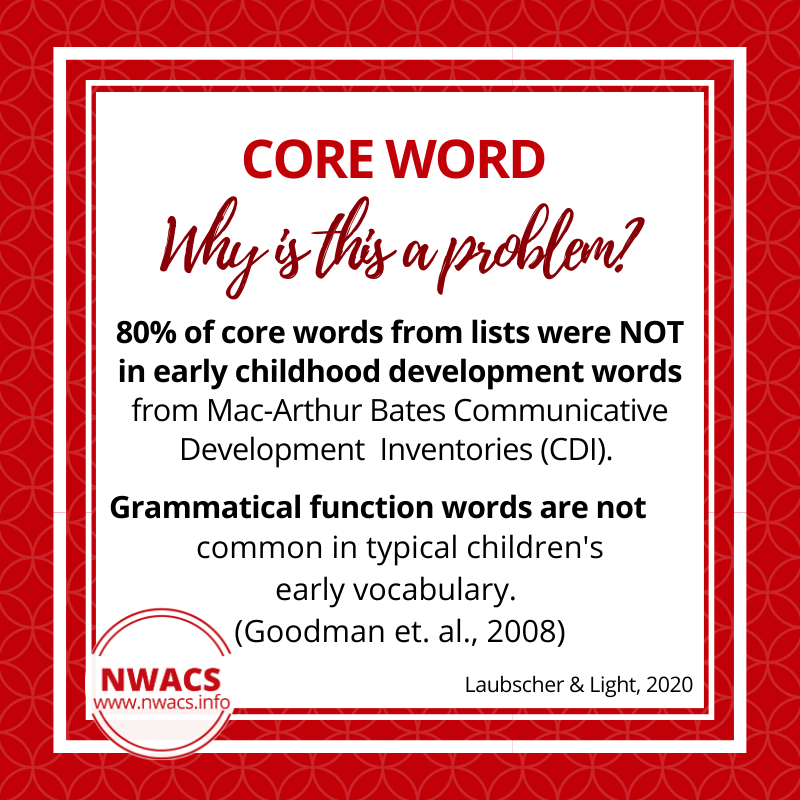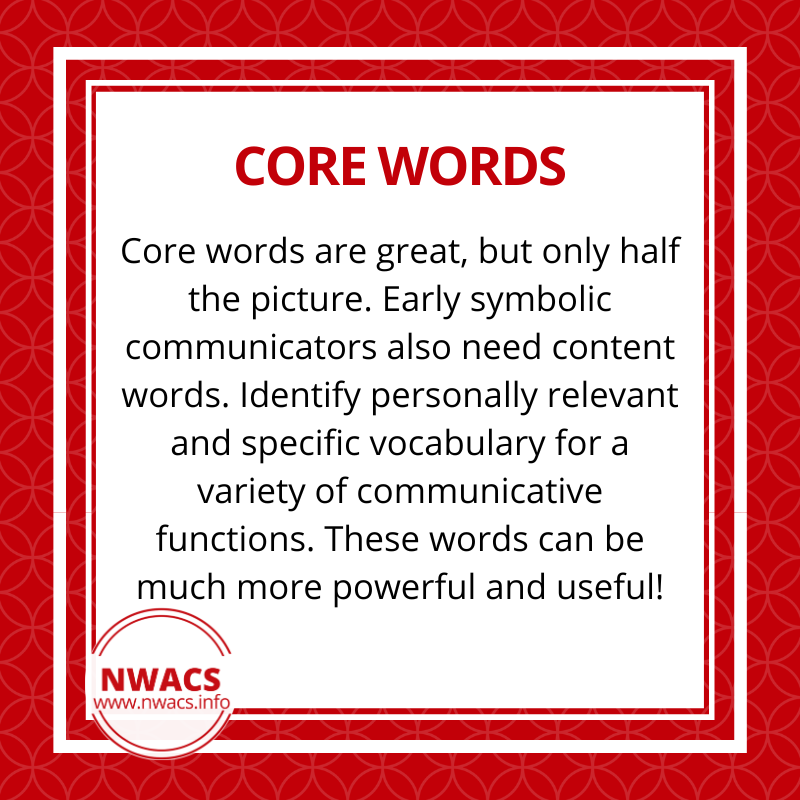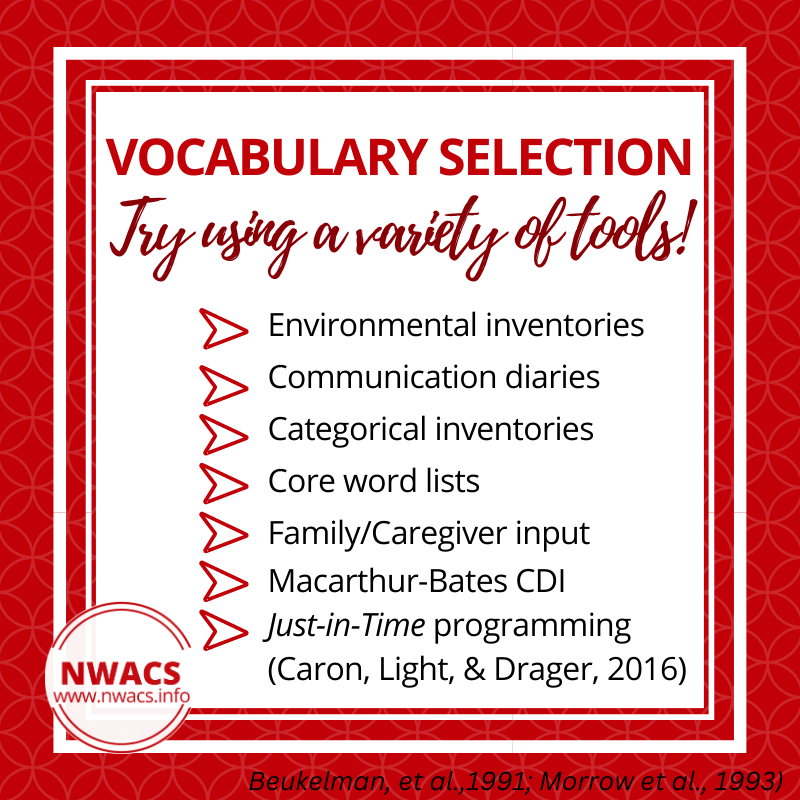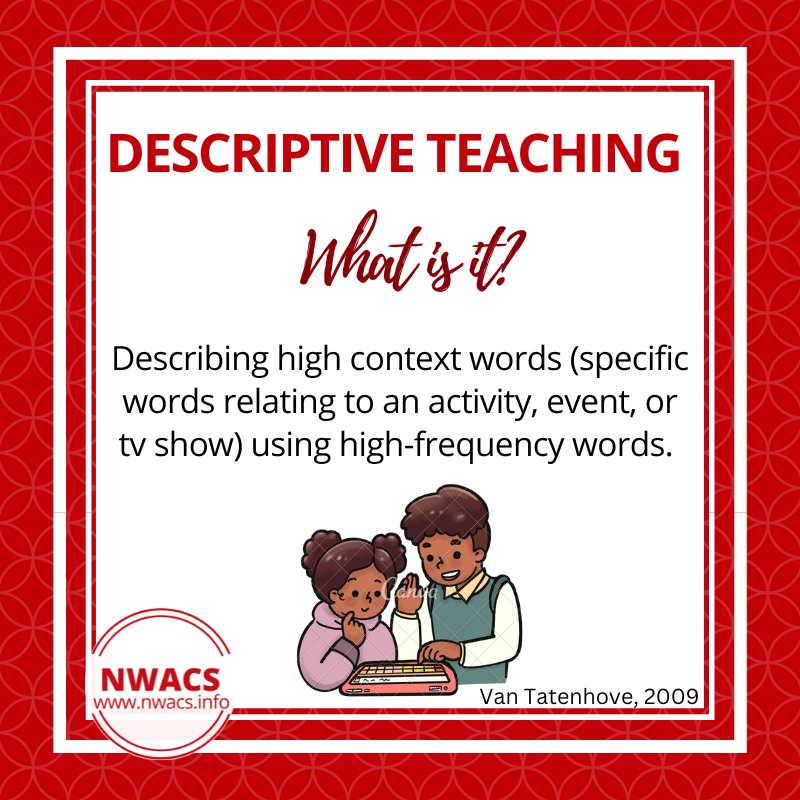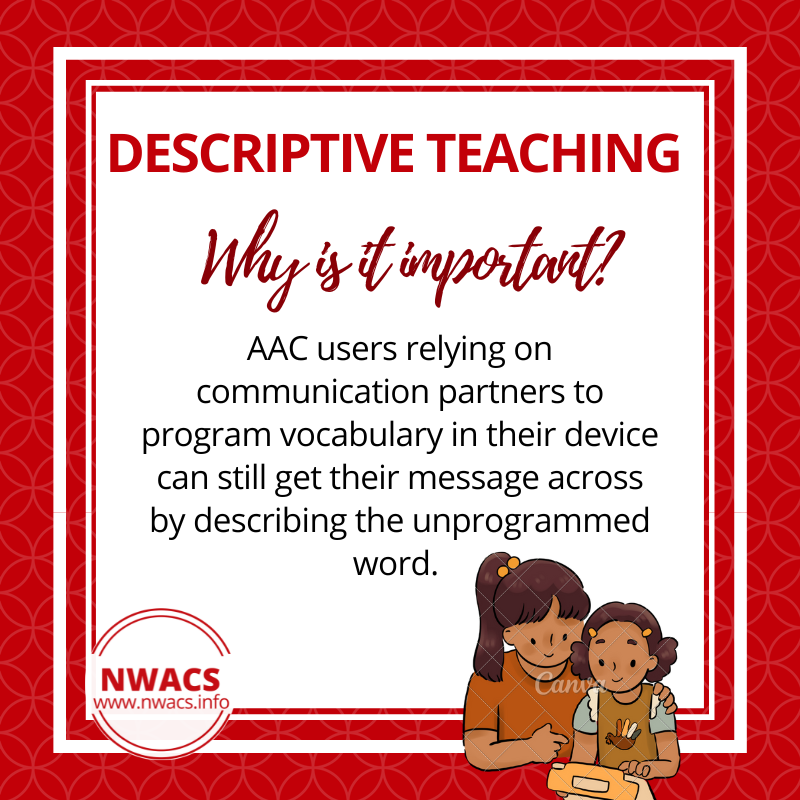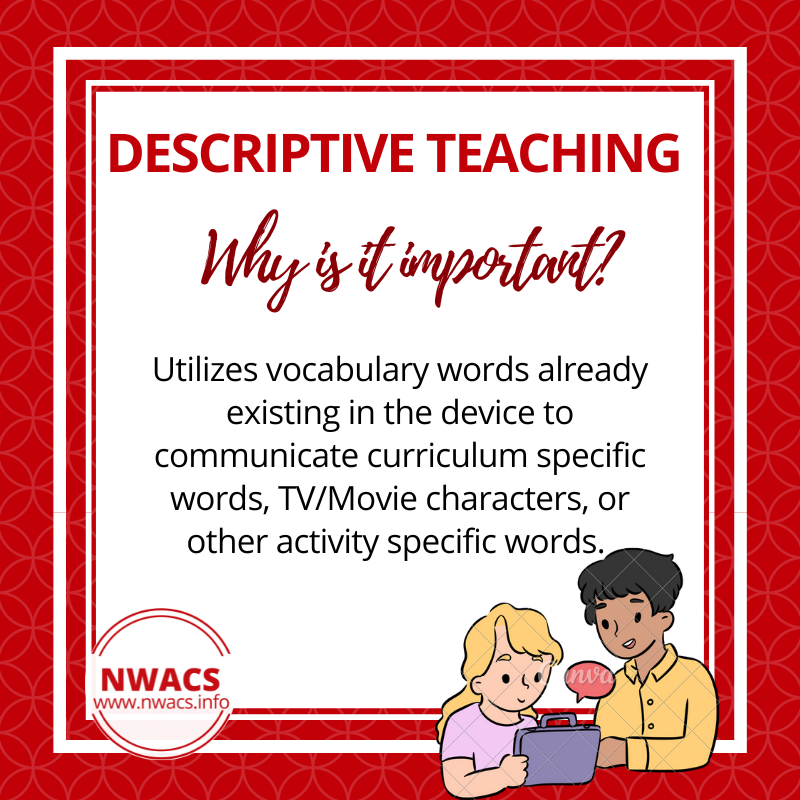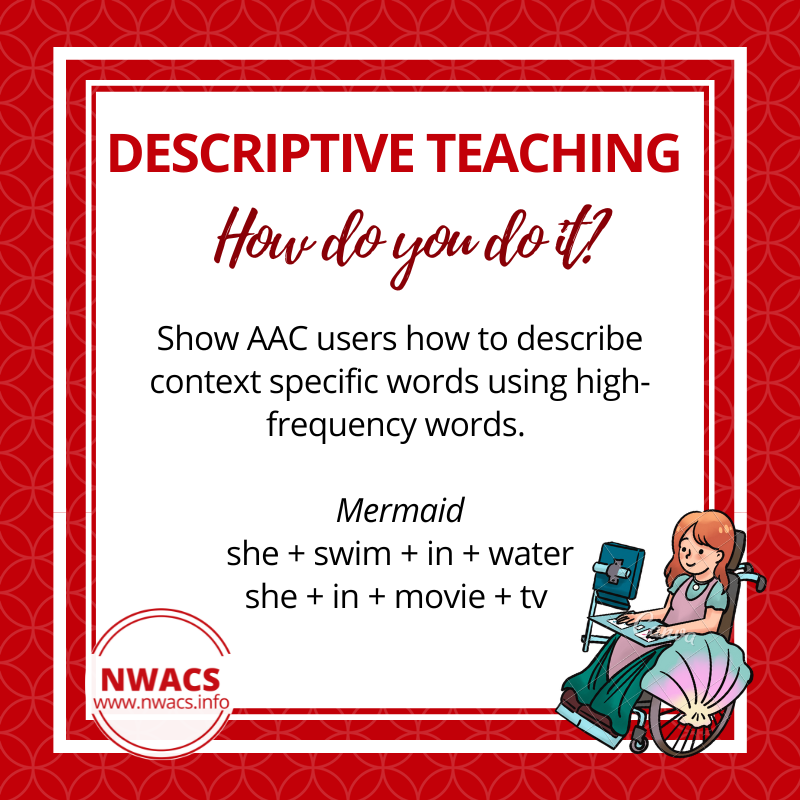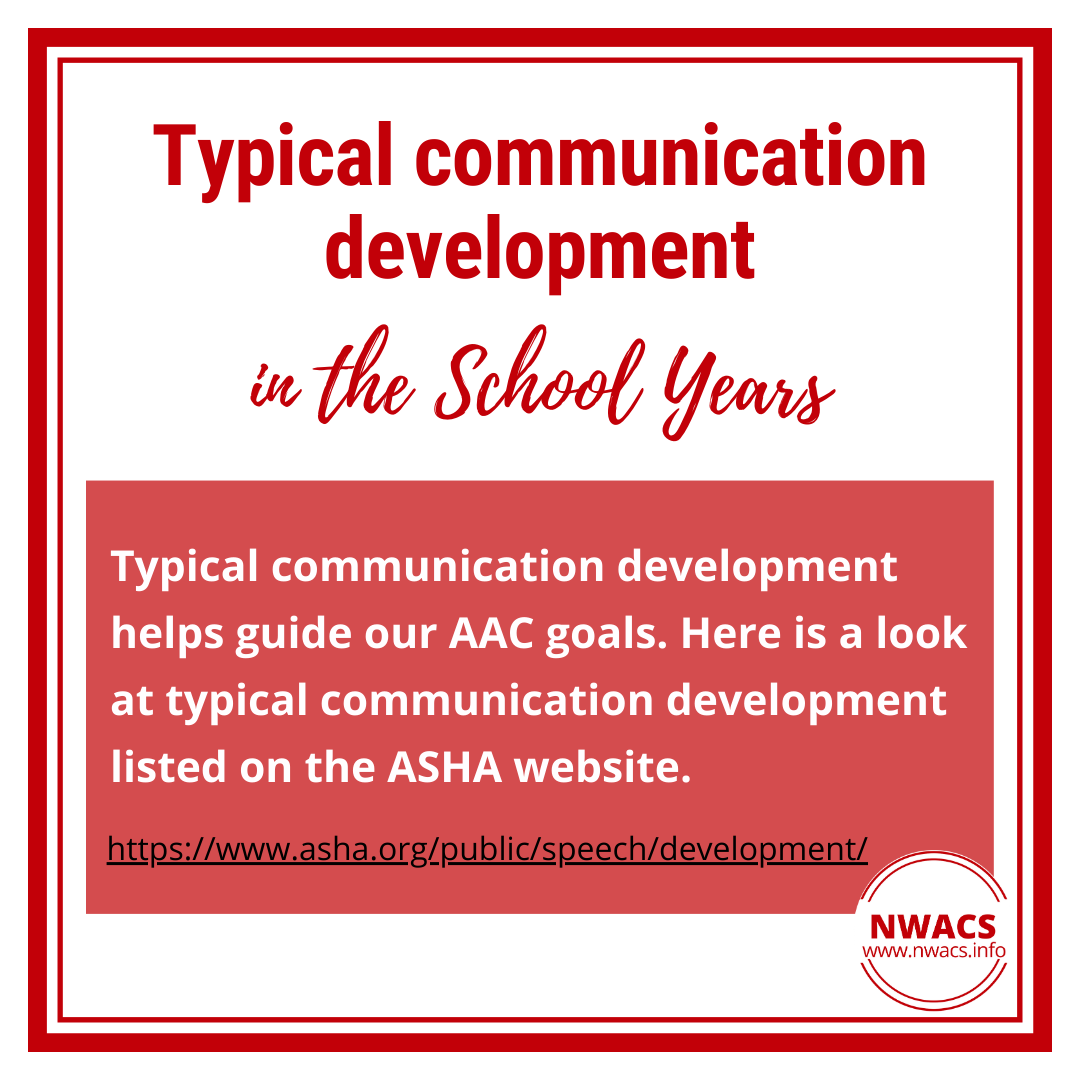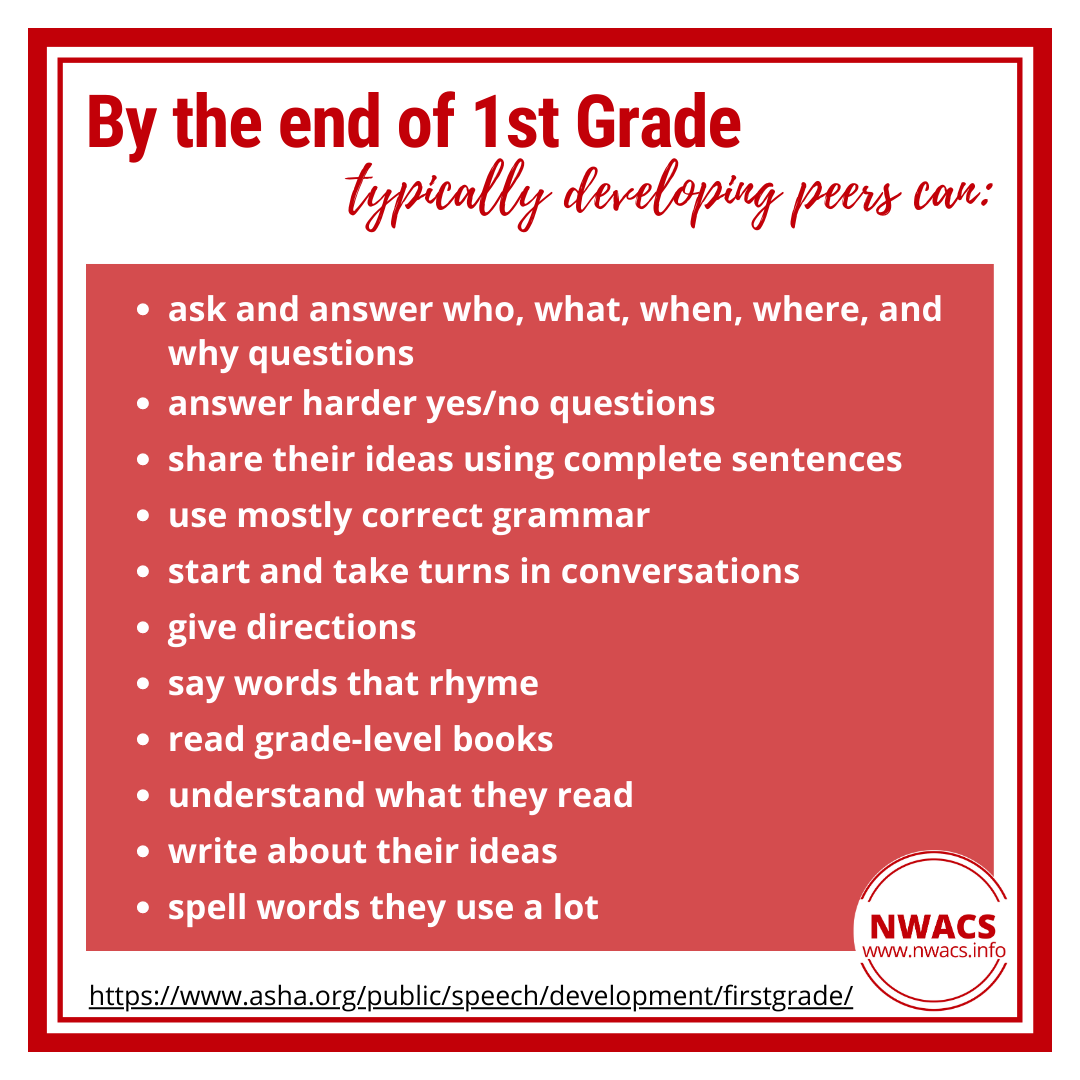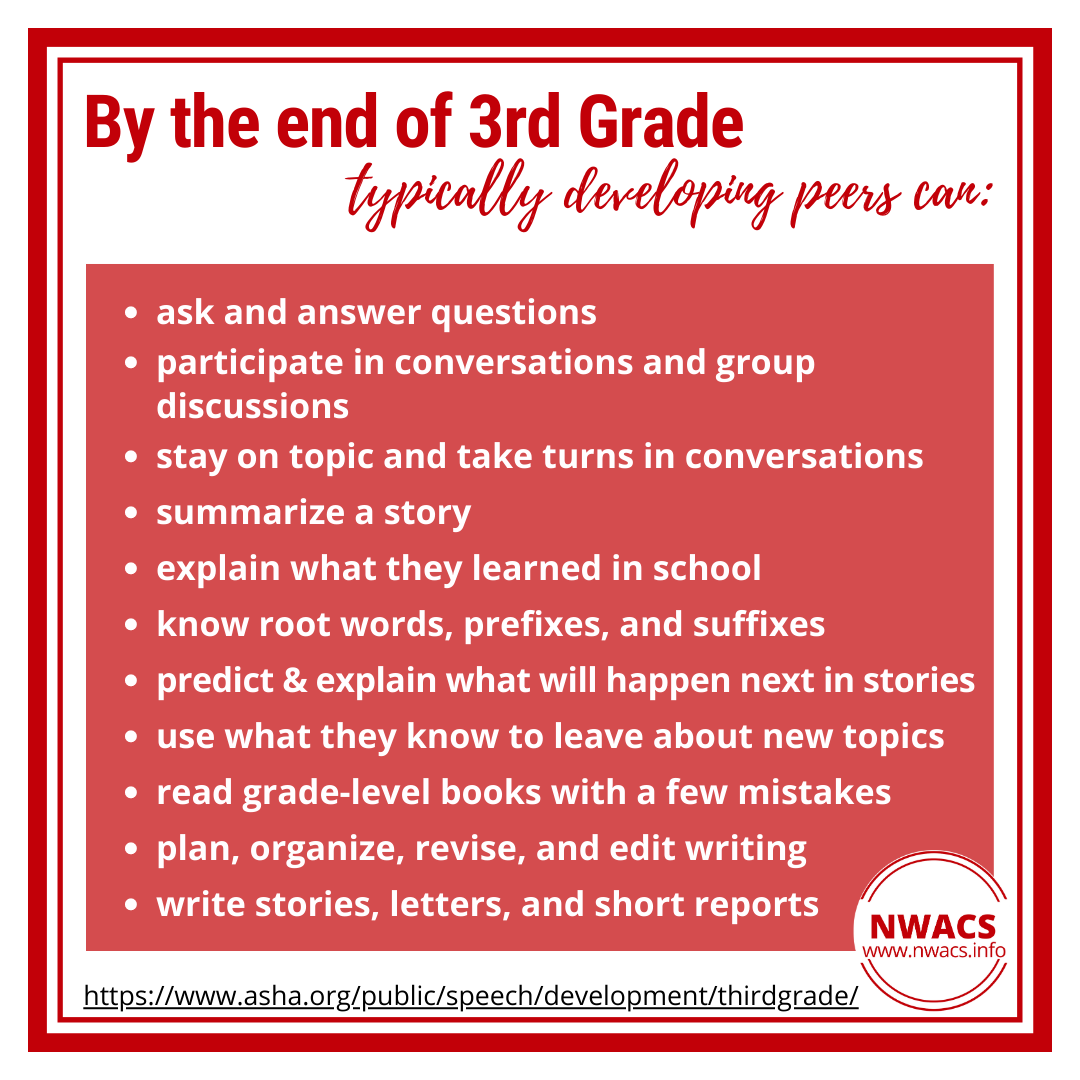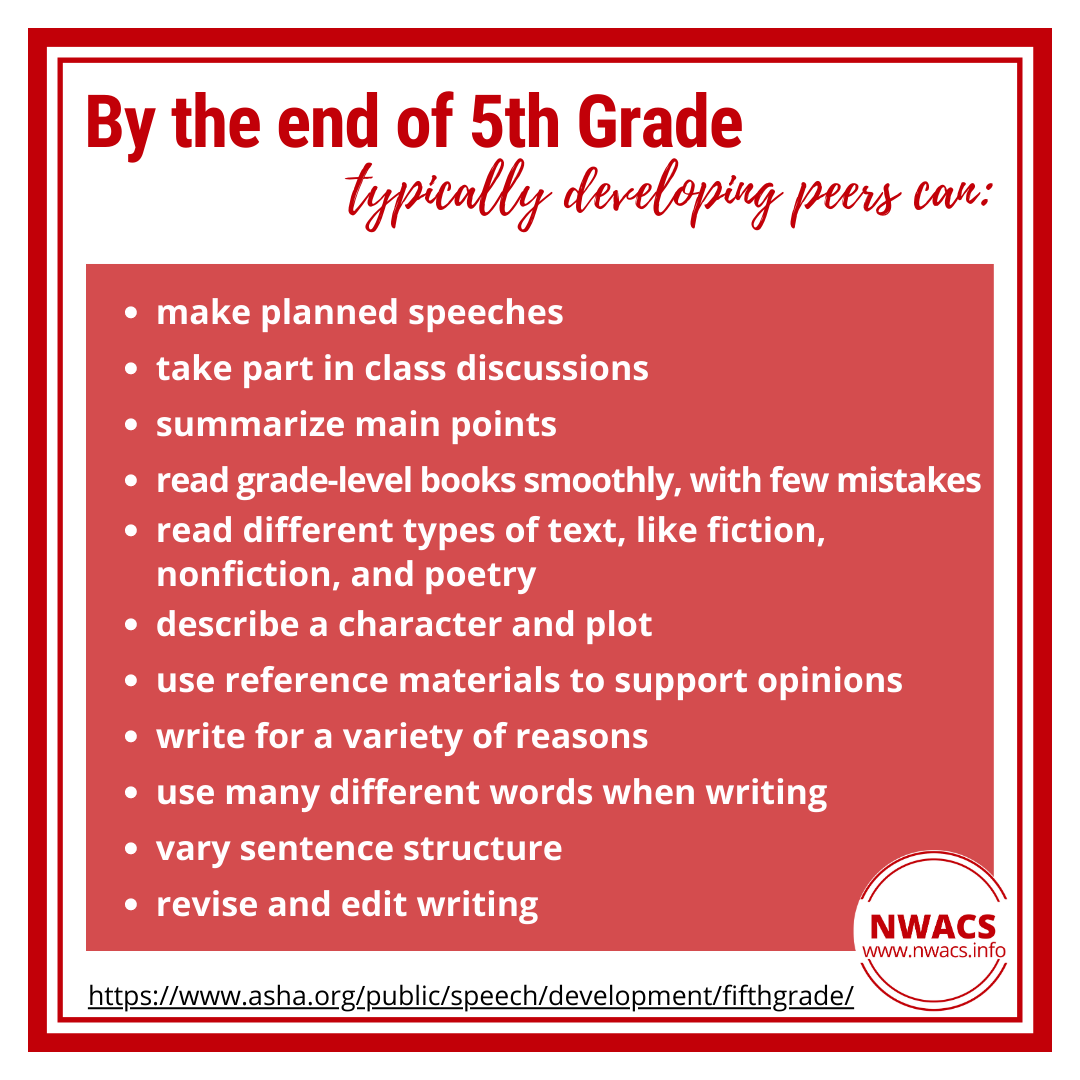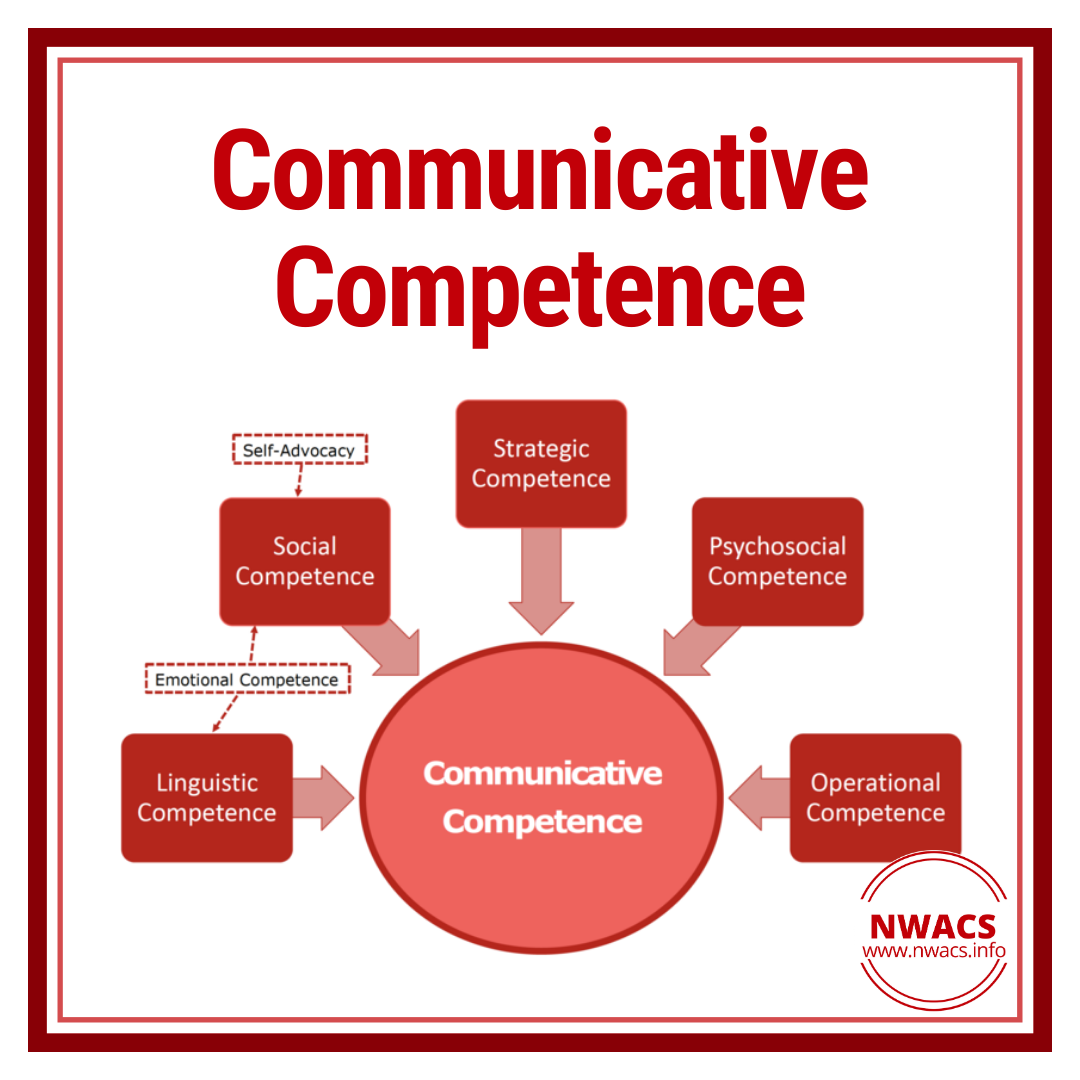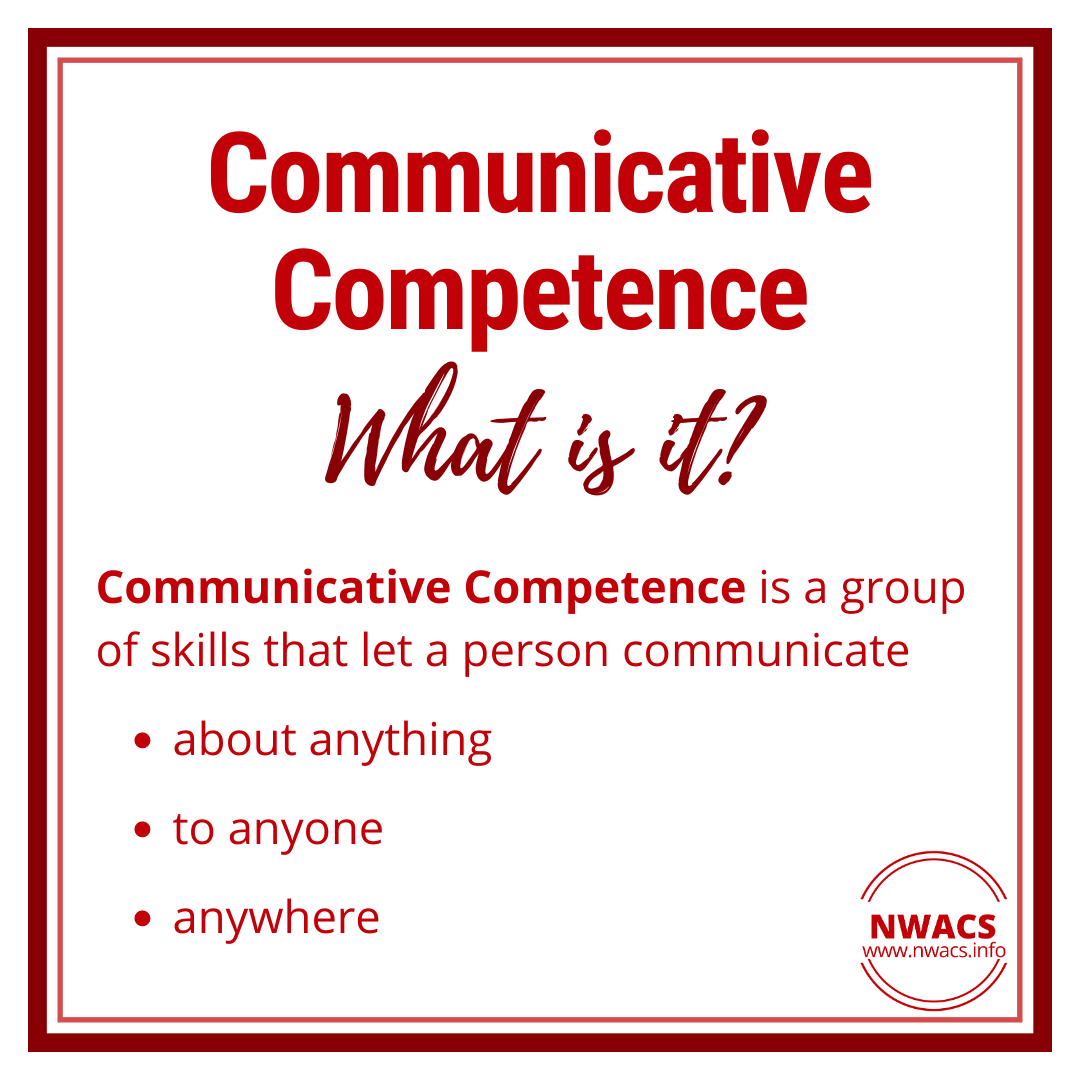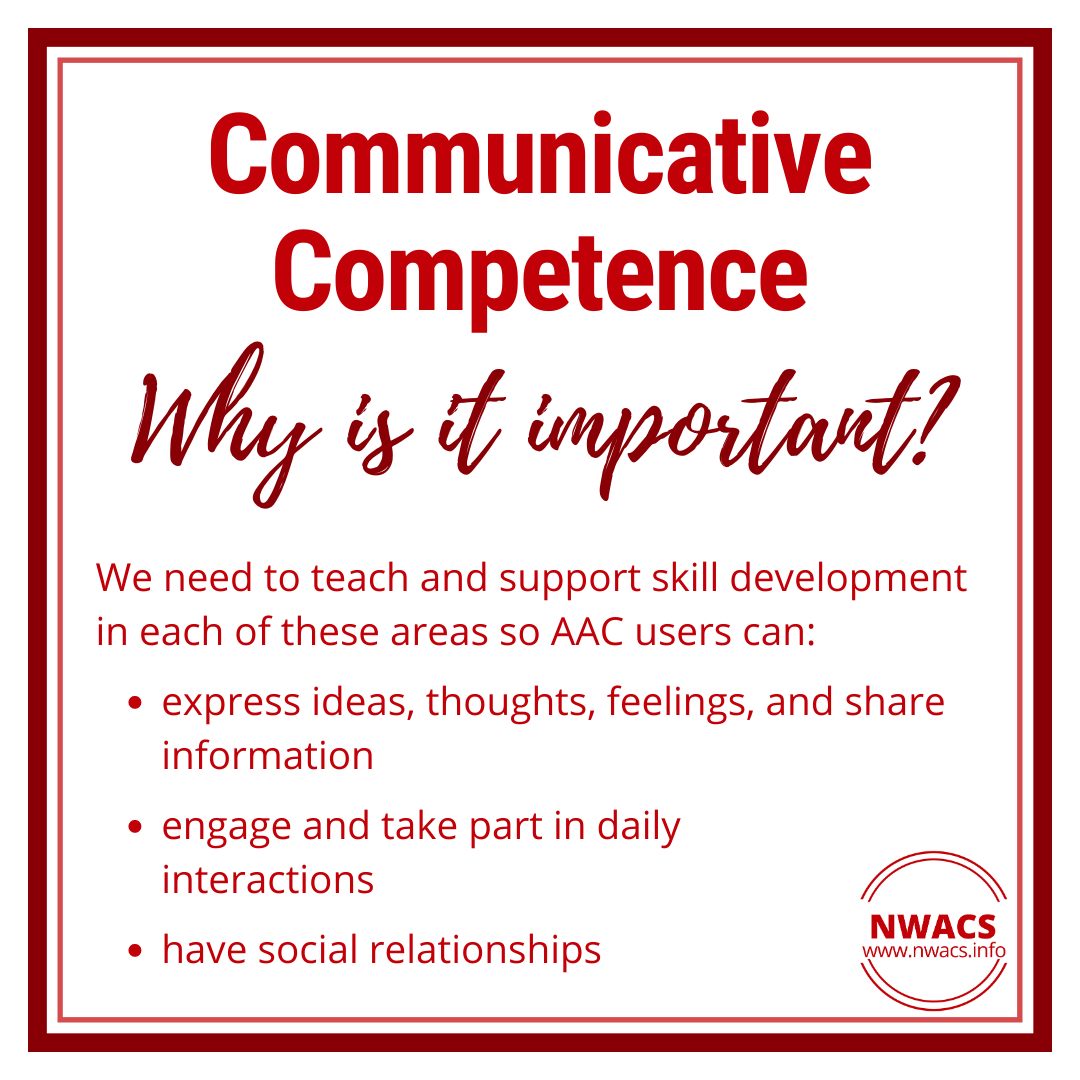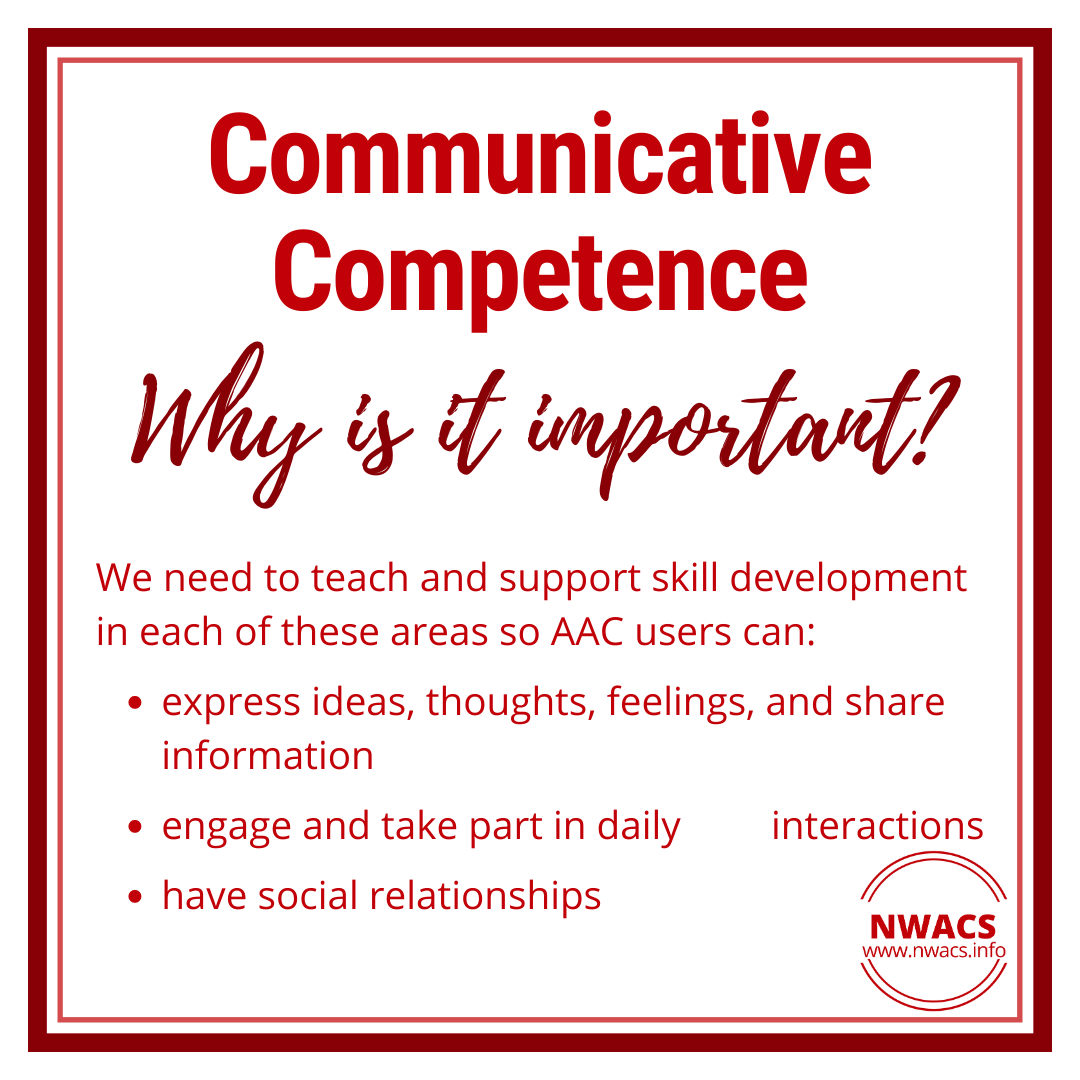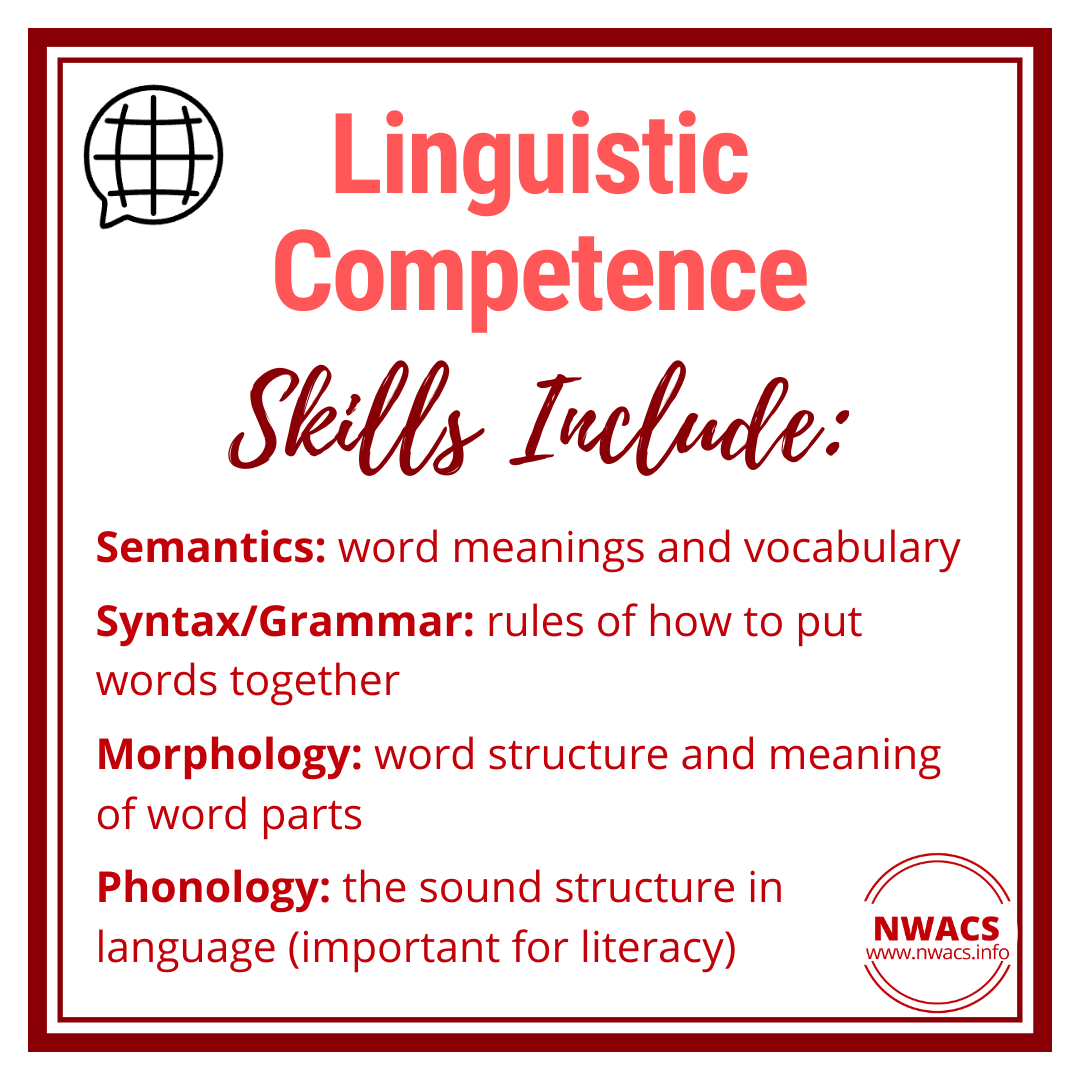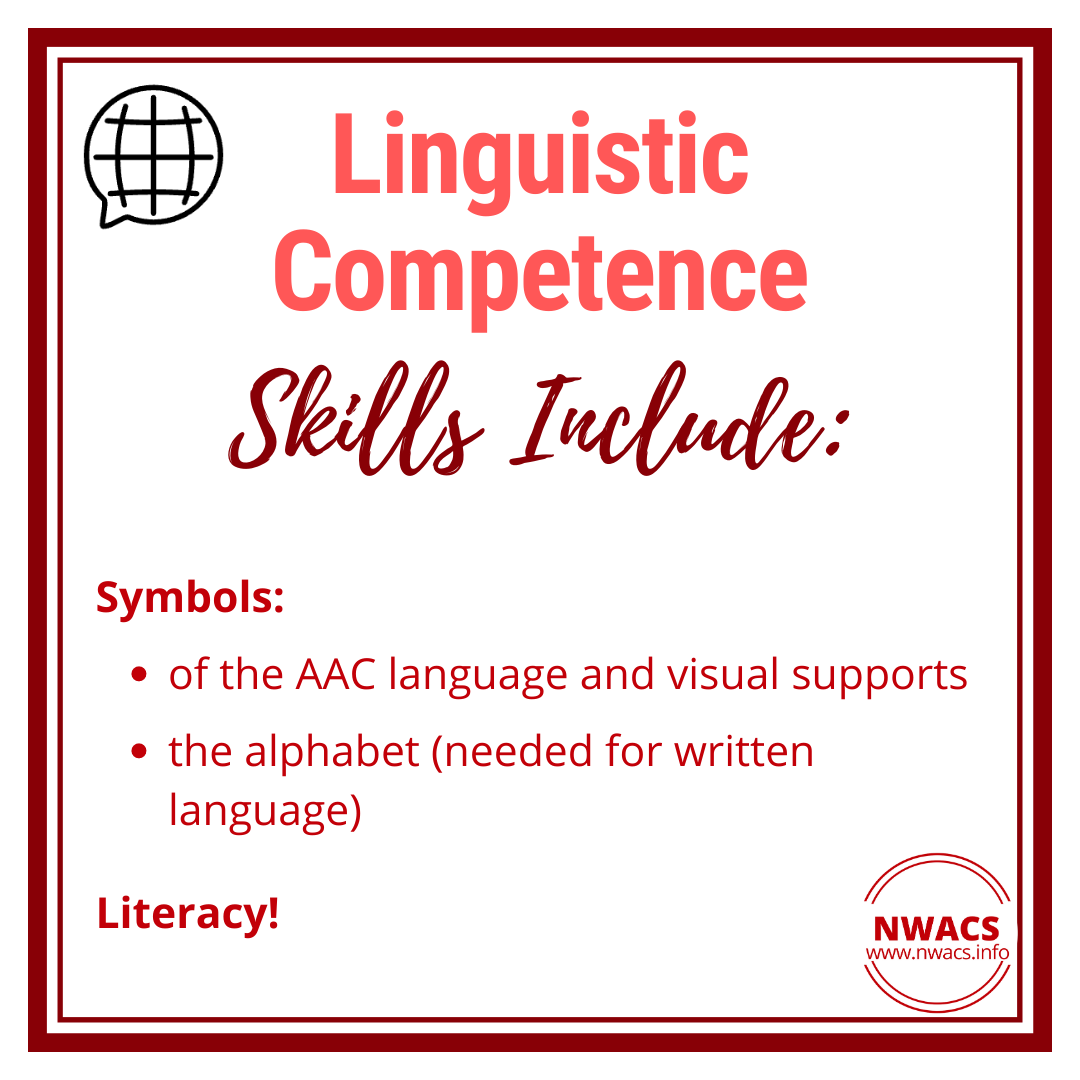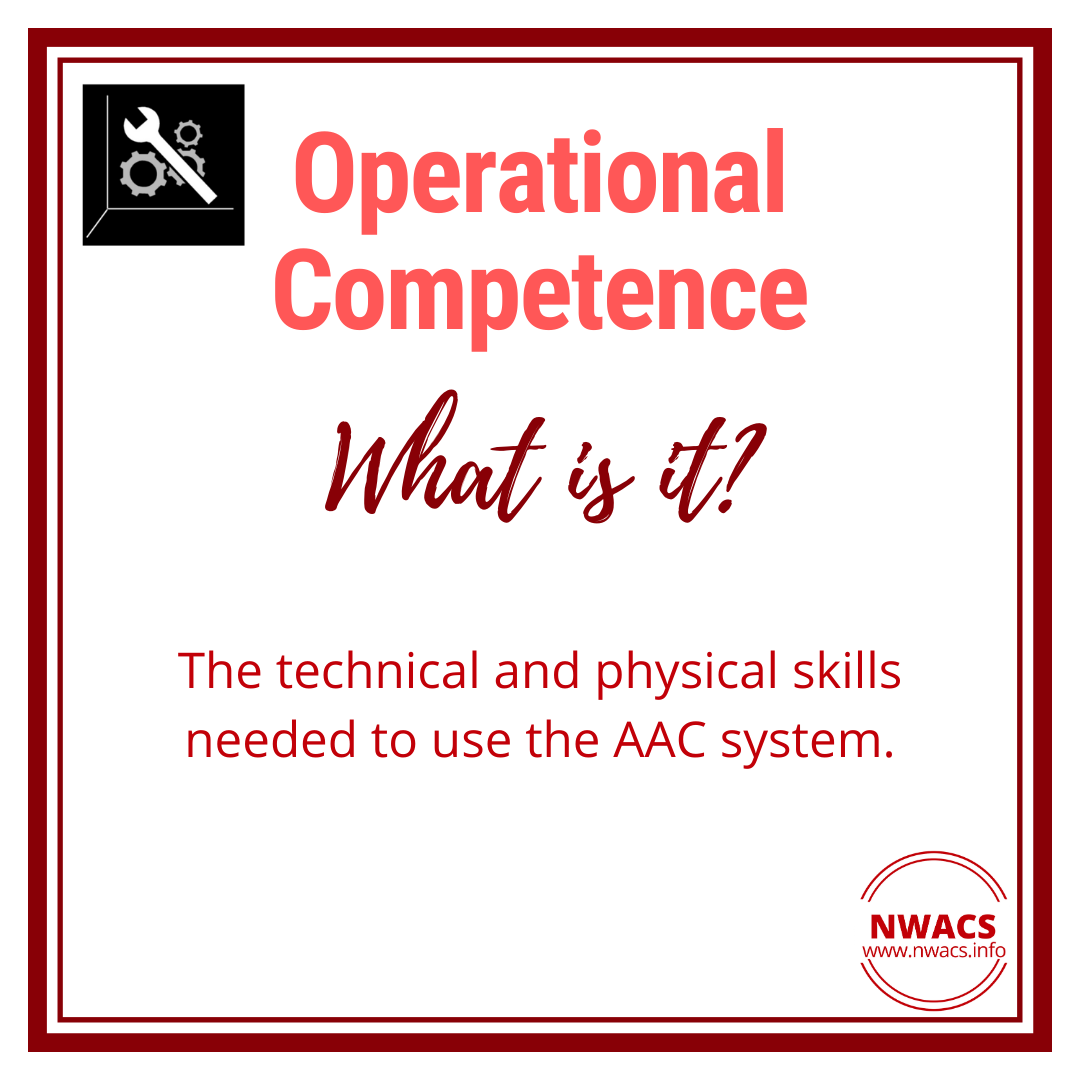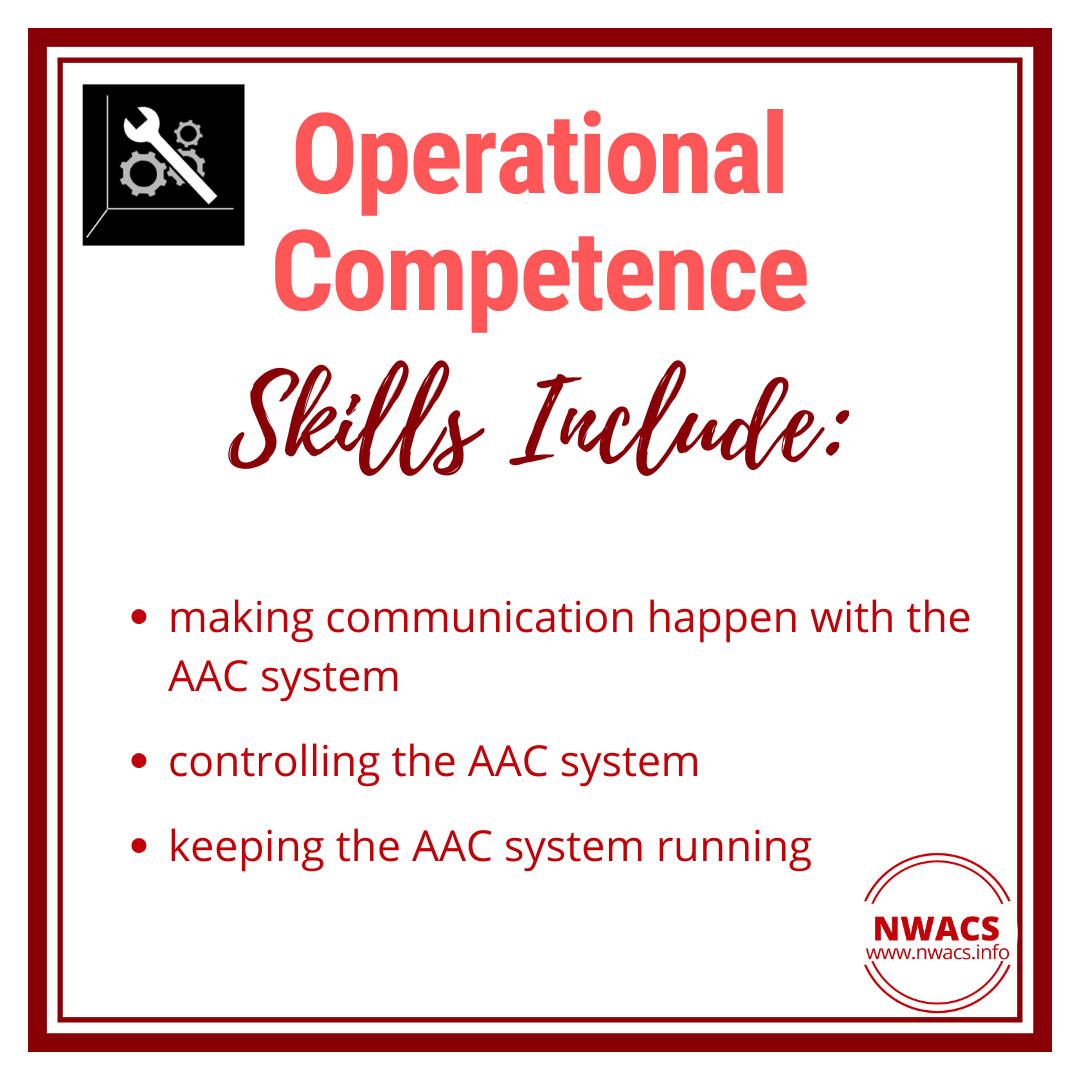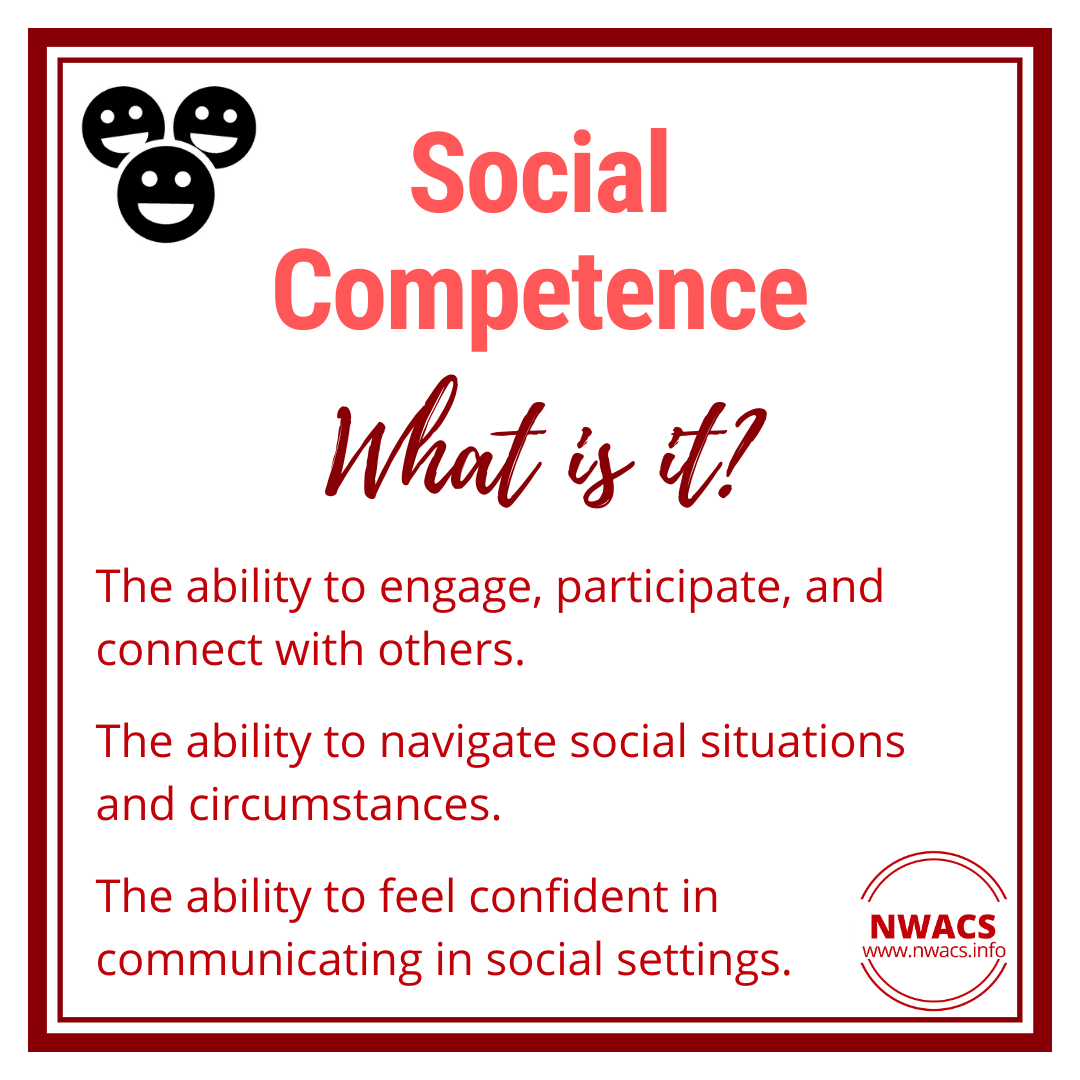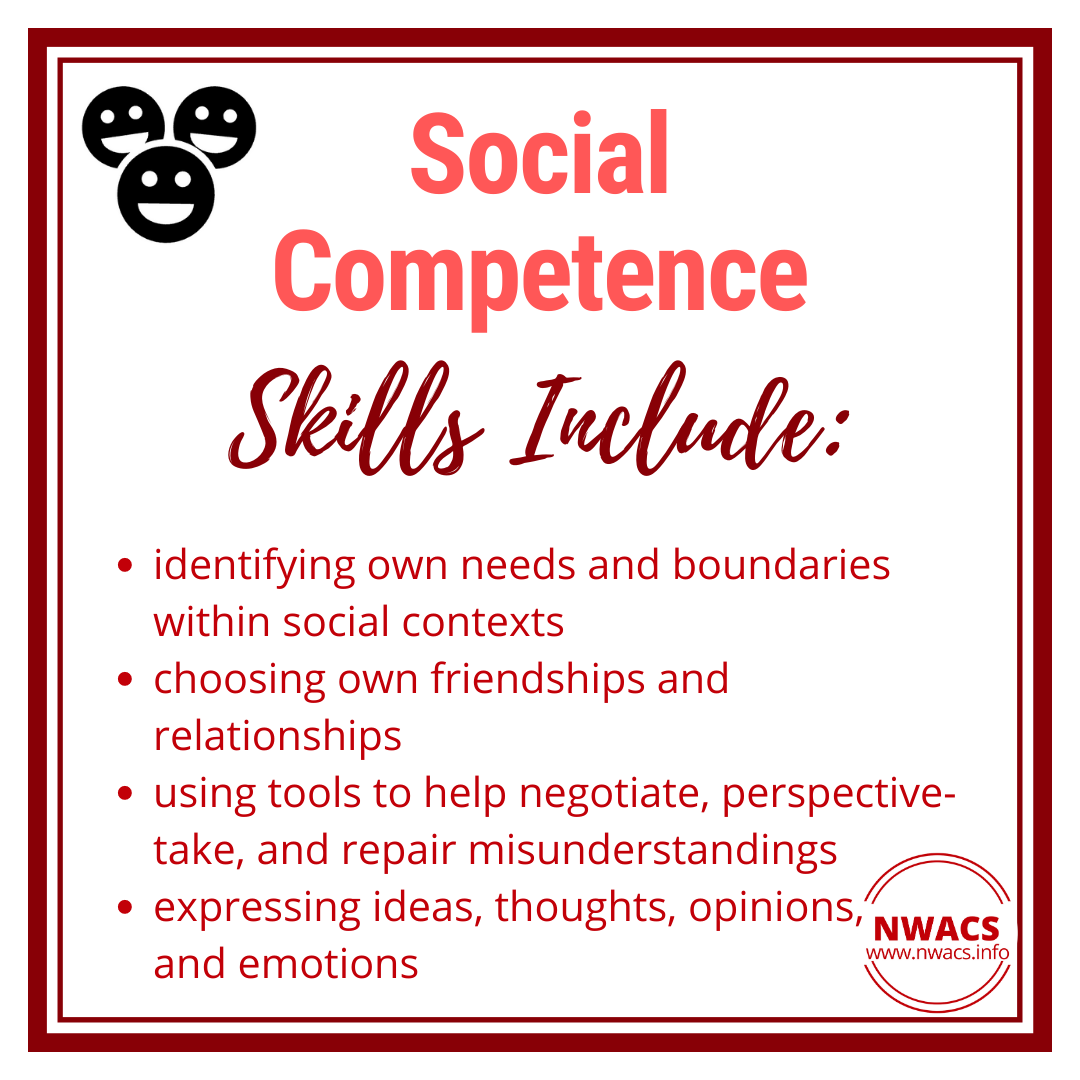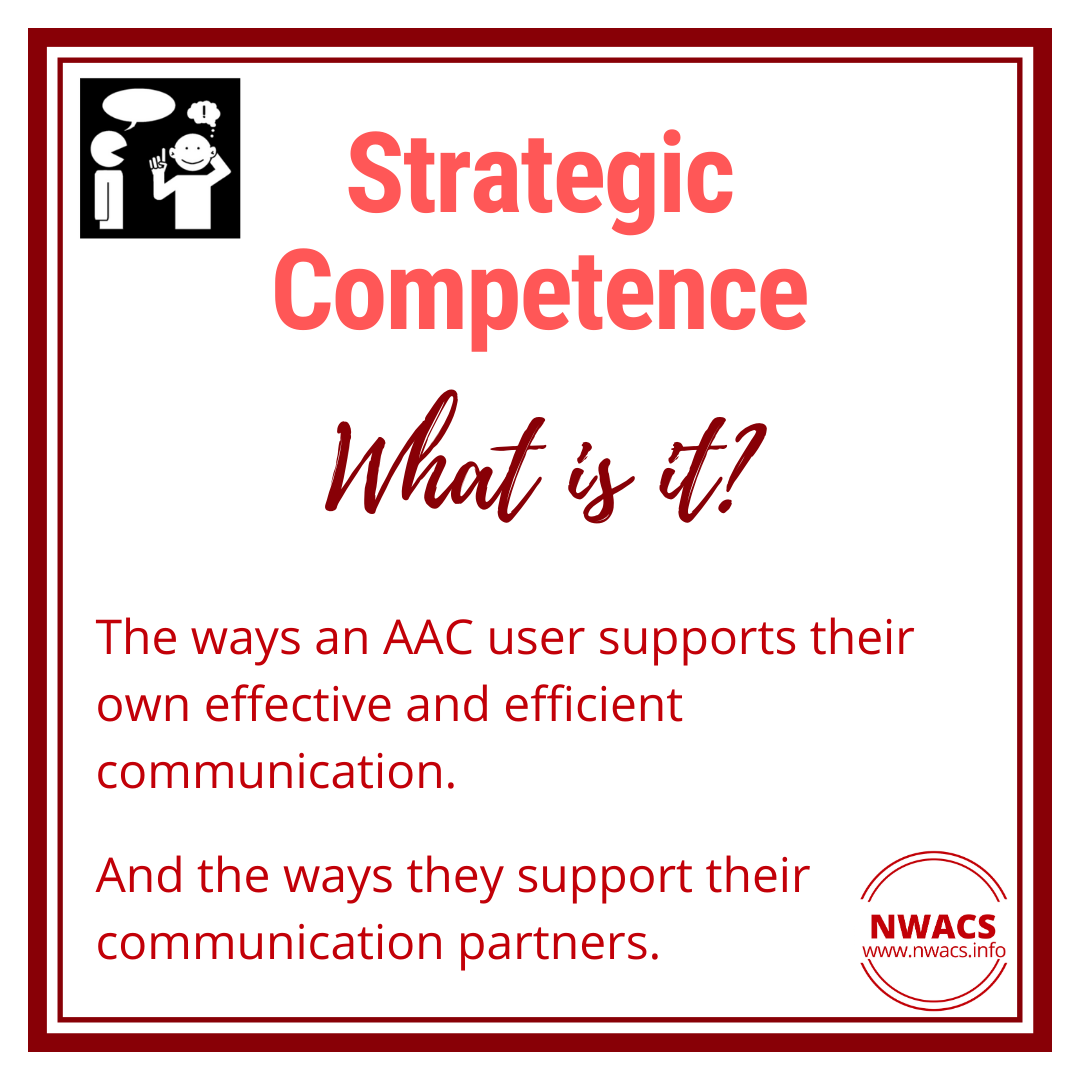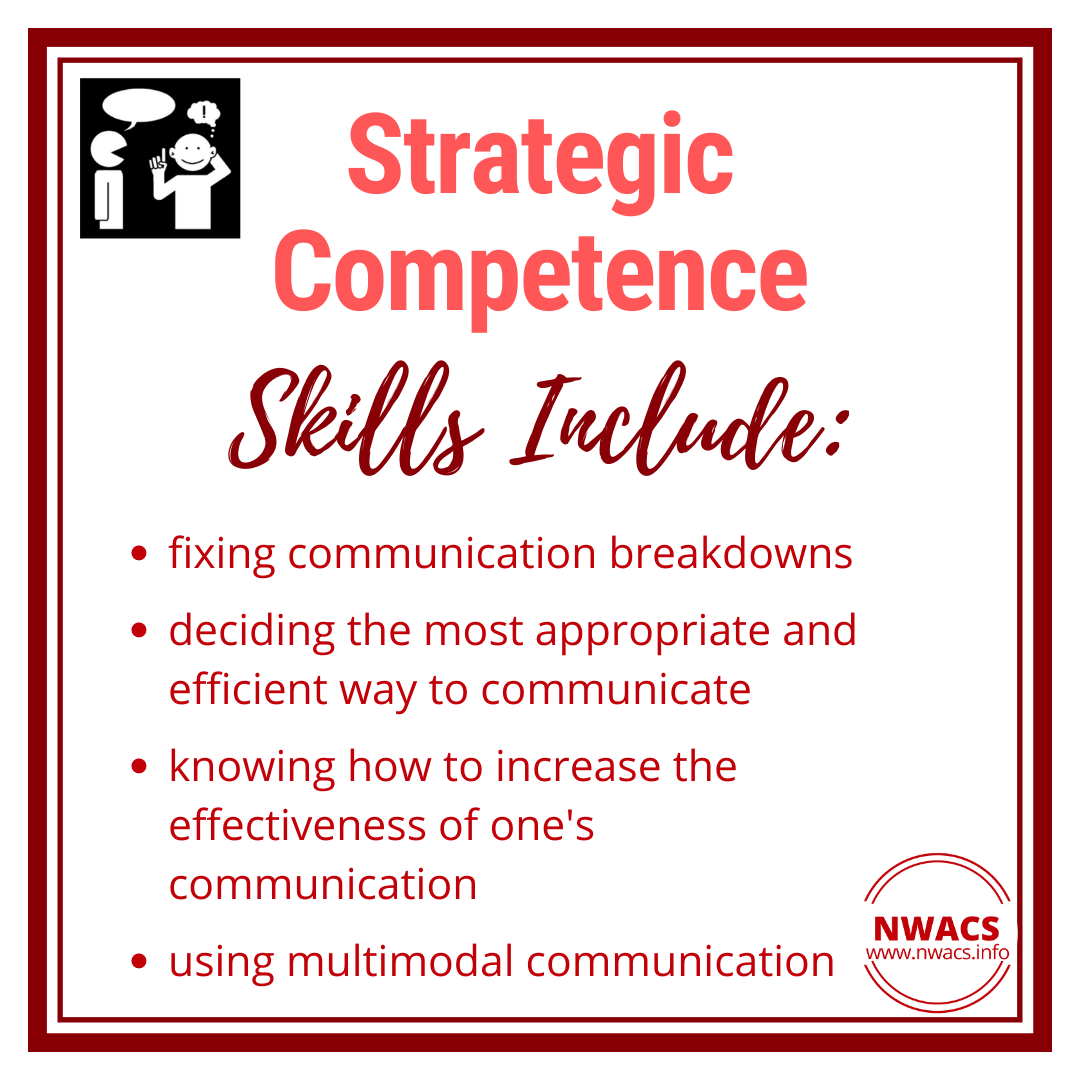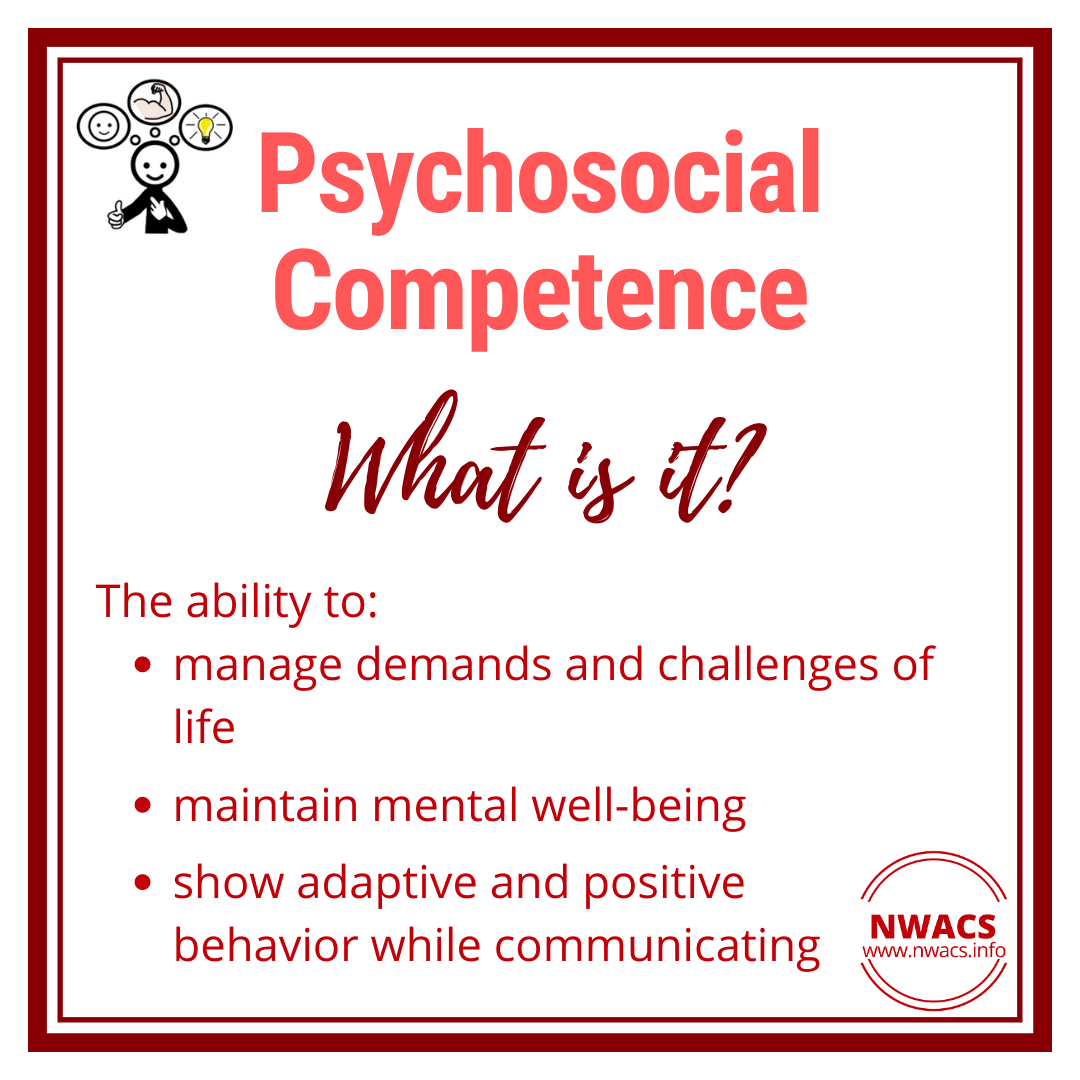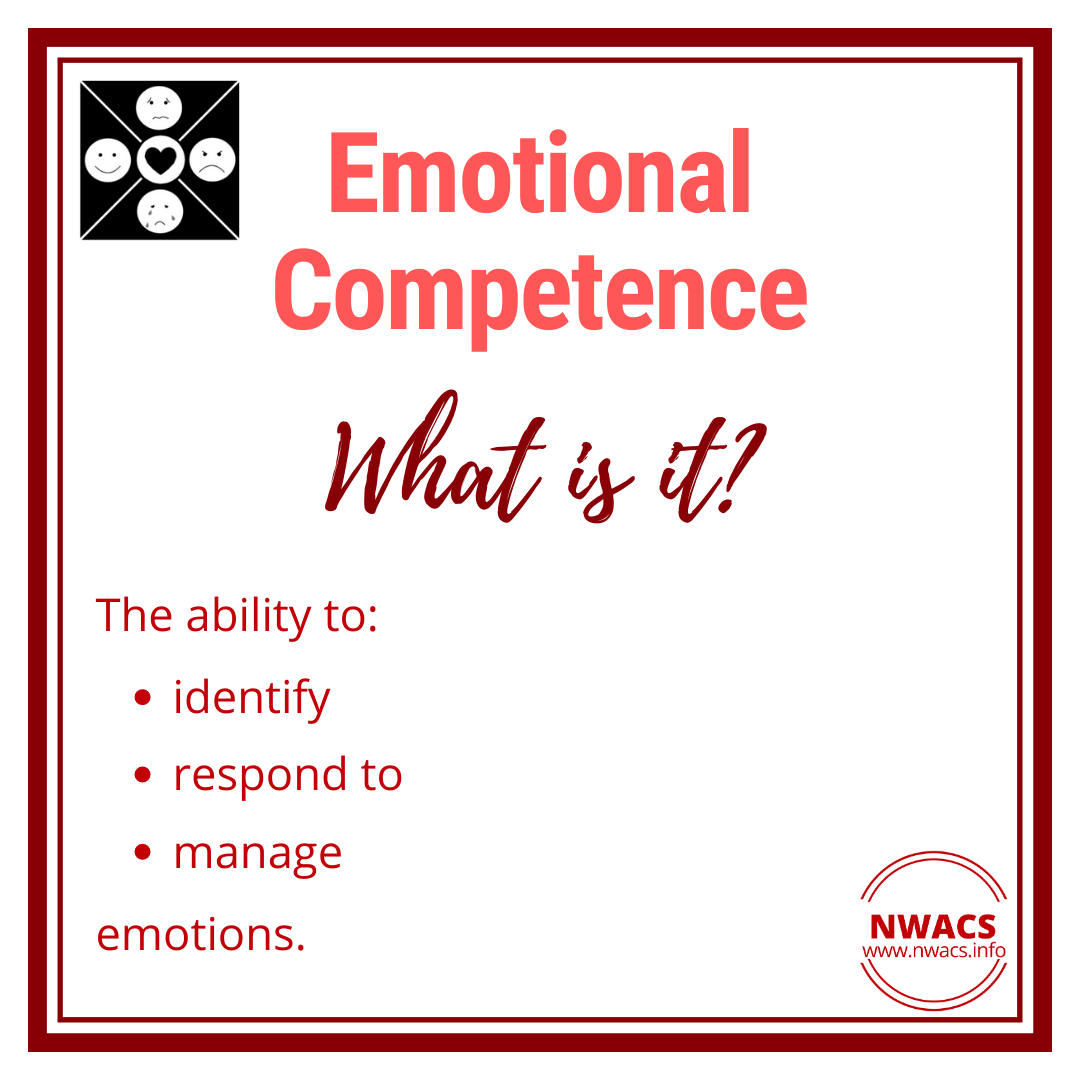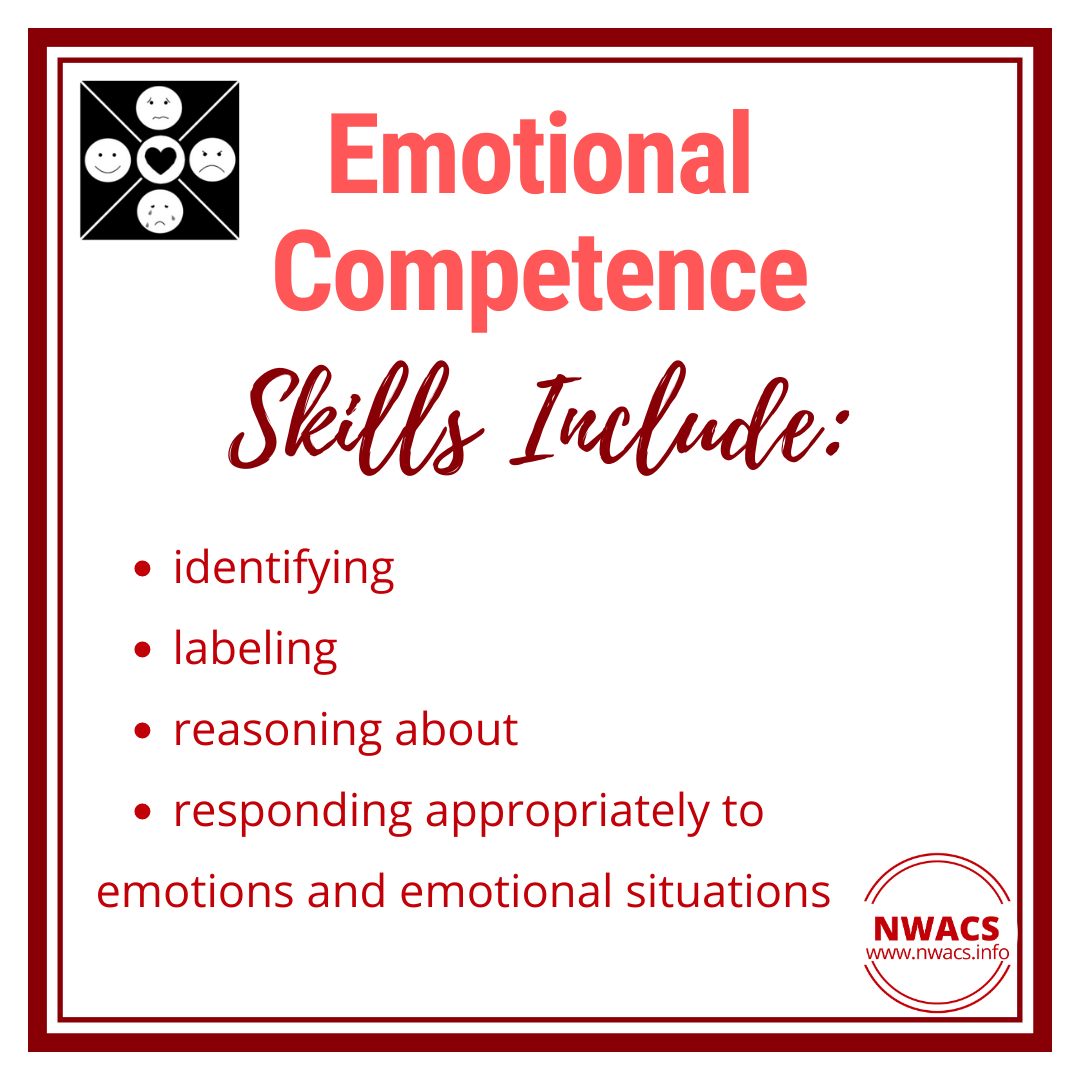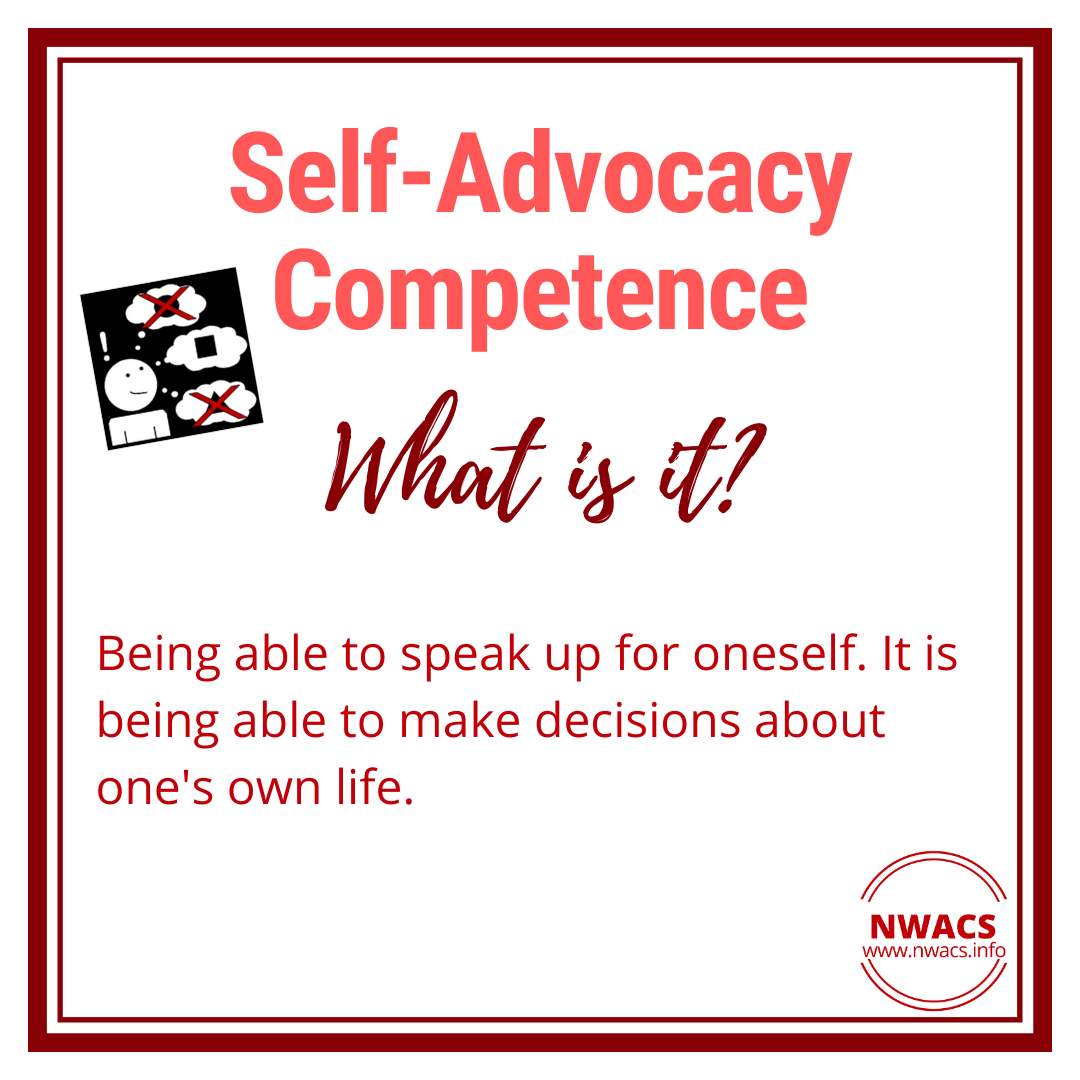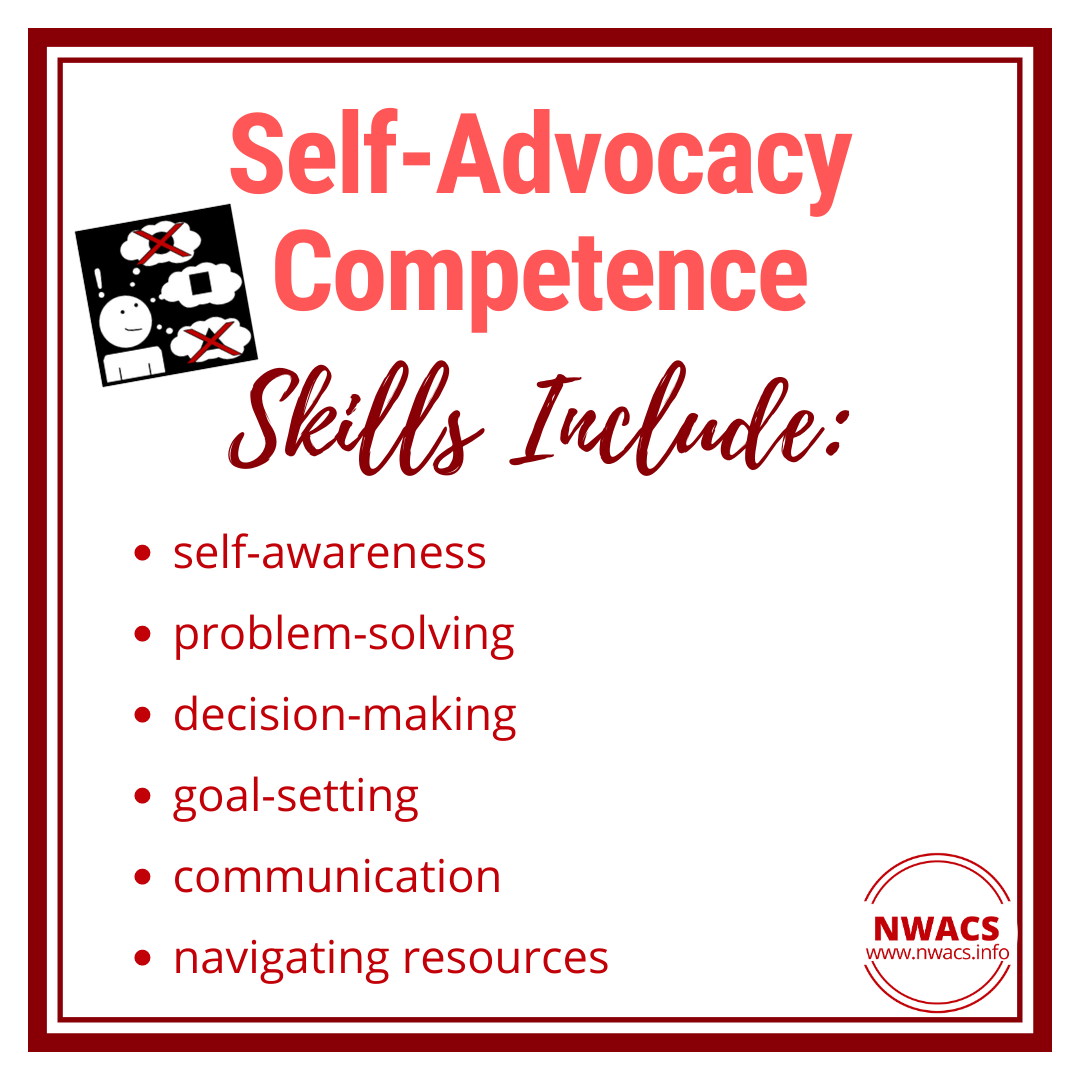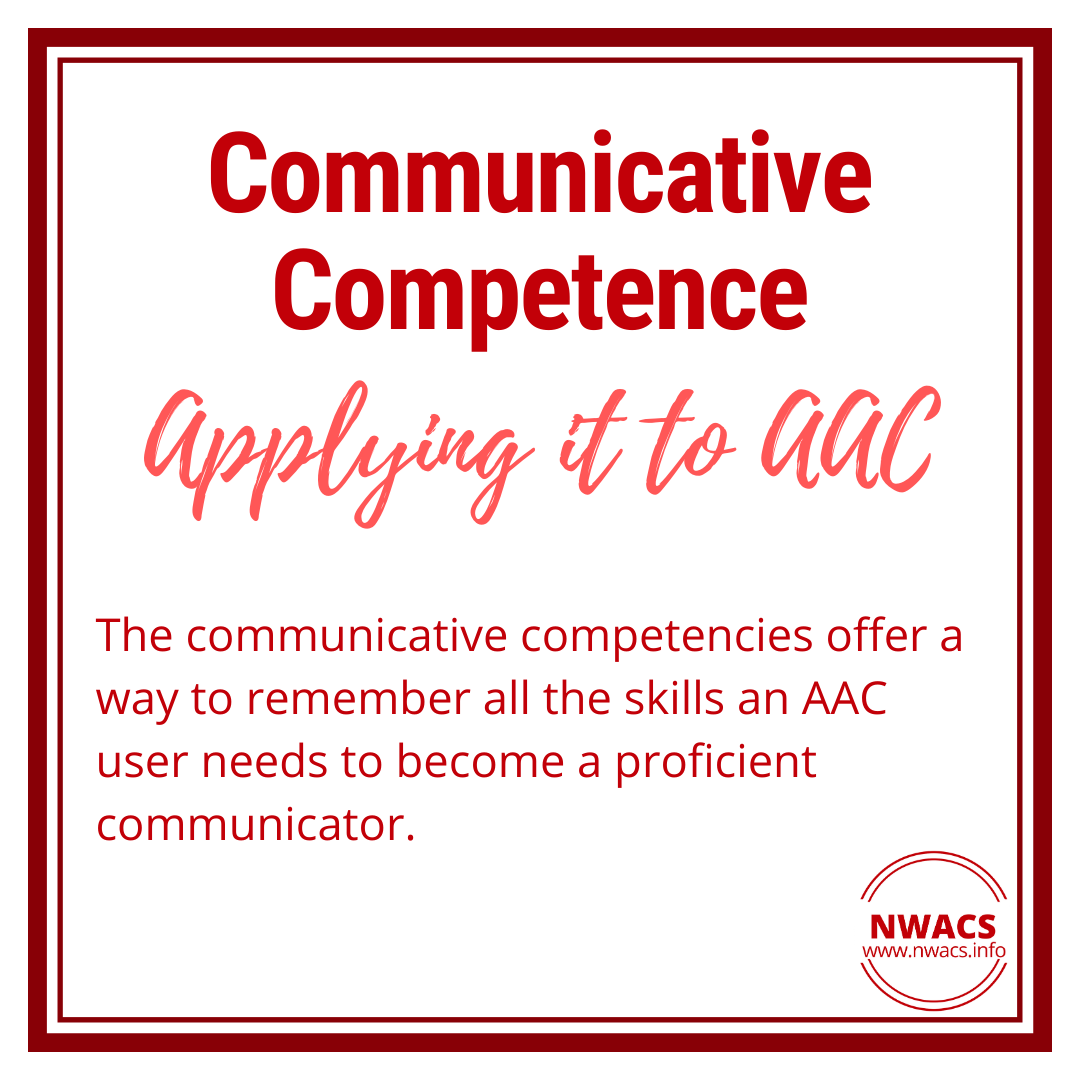AAC in School-Age
This is a curated collection of information and resources related to supporting augmentative and alternative communication (AAC) in children ages five+ years. We encourage you to explore and judge for yourself which to add to your toolbox.
These resources are for educational purposes. This is not an exhaustive list. Inclusion does not signify endorsement. Use of any information provided on this website is at your own risk, for which NWACS shall not be held liable.
Do you have a favorite resource or strategy that we missed? Send us an email to share!
What does supporting communication development look like at this age?
Kindergarten through Middle School. “School age” encompasses a big range of ages and development! At the younger end we have children moving from play-based learning to a more adult-led academic focus. At the older end we have children entering puberty.
Supporting communication development starts looking more like:
explicit instruction
using grade-level content
developing skills to be able to answer questions and communicate to show knowledge/understanding
developing skills to be able to participate in class/group discussions
developing skills to be able to read and write
It looks like developing communicative competence.
During these years we need to start teaching and developing:
the concept of consent
self-advocacy skills
self-determination skills
the ability to communicate about their emotional, mental, physical self
Students deserve to start learning about their communication rights.
Communication is about connection. Not compliance. It is about the authentic exchange of ideas, thoughts, information, and feelings. During the school years we need to support their ability to engage, participate, and fully communicate in all the environments and with all the people they encounter.
And a little fun sprinkled in doesn’t hurt! 😉
“Learning first occurs as a part of emotional interactions; it involves the split-second initiatives that children take as they try to engage other people, interact with them, communicate and reason with them.”
“Students with CCN often do not get the support they need to participate with their peers throughout the school day, potentially leading to exclusion from full participation beyond the school years.”
What AAC Looks Like
multimodal (also see this blog post for more information about multimodal communication)
environmental supports for communication
able to grow with the child
matches access and other features needed by the child
Helpful Implementation Strategies
modeling without expectation
model language for a variety of communicative functions
create communication and learning opportunities through experiences
embed AAC in daily routines (motivating, repetitive, predictable)
partner-assisted/co-constructing messages
expectant pause
language expansion and extension
identify, reason and talk about, and respond to emotions
explicitly teach concepts and word meanings
morphemes
grammar
build in generalization with Rehearse, Practice, Model - GO! from Dr. Caroline Musselwhite
Resources to Explore
Articles, Books, and Documents
AAC for All: Culturally and Linguistically Responsive Practice (2022) by Mollie Mindel and Jeeva John
Augmentative and Alternative Communication: Challenges and Solutions (2021), Billy Ogletree
Part II: AAC Challenges and Solutions: Childhood
Part IV: AAC Challenges and Solutions: Special Populations and Issues
Augmentative and Alternative Communication: Engagement and Participation (2017) by Erna Alant
Augmentative and Assistive Communication With Children: A Protocol and Intervention Plan to Support Children with Complex Communication Profiles (2020) by Lesley Mayne and Sharon Rogers
Fundamentals of AAC: A Case-Based Approach to Enhancing Communication (2023), Nerissa Hall, Jenifer Juengling-Sudkamp, Michelle L. Gutmann, and Ellen R. Cohn (eds)
Practically Speaking: Language, Literacy, & Academic Development for Students with AAC Needs (2009), Gloria Soto & Carole Zangari (eds)
Strategies for Talking about Emotions as PartnerS (STEPS) instructional program developed by Na & Wilkinson (2015, 2017)
Learning Modules
AAC Learning Center Moodle free modules on AAC
Dynamic Learning Maps Professional Development free modules
POWER:AAC a series of 12 free modules from PaTTAN
Websites
“Students do not learn vocabulary words based on their age or their grade...they learn words based on their experiences.”
NWACS website
PRC-Saltillo’s Chat Corner
Webinar Recordings
AAC in the Cloud - recordings from past presentations
Resources to Support the Complex Communication Needs (CCN) Population a series of 24 webinar recordings from the Alberta Regional Professional Development Consortia (ARPDC)
Other Resources
Road Maps (Patricia Dowden, Ph.D., CCC-SLP, University of Washington; shared with permission at 2017 WSLHA Spring Workshop)
Useful Tips
Families/caregivers of and multidisciplinary professionals working with children need training and ongoing support!
Stay family-centered and child-centered!
Focus on communicative intent, not how the message was communicated.
Learn about prompting hierarchies, different kinds of prompts/cues, and how to fade them.
Presume competence! Presume Potential! Believe they CAN learn!
Find your support networks!
Families:
Leslie Jeanne Berns Support Group for children who have communication challenges and their families (facilitated by University of Washington Speech and Hearing Sciences clinical faculty (SLP) and graduate students; meets virtually, monthly)
Northwest Augmentative Communication Caregiver Society (NWACCS) - This Facebook group (administrated by NWACS) is for families in Washington State. It is for parents/guardians, family members, and caregivers of children who are unable to meet all their communication needs with spoken language.
The Arc of King County hosts Smooth Talkers, an AAC user and family meetup. These meetups are usually on a Saturday each month during the school year. People of all ages and AAC skill levels are encouraged to attend, even those still exploring if AAC is right for them. This past year they alternated between in-person and virtual options.
AAC vendors and app developers have pages on various social media channels. Many also have Facebook groups that can be a good place to connect with a support network.
also look for social media accounts and/or Facebook groups related to specific diagnoses
and look for social media accounts of AAC users and/or parents of AAC users
Facebook groups, such as:
Professionals:
NAACHO: Networking for AAC and Hangout - This Facebook group (administrated by NWACS) is for SLPs in Washington State who support people who use AAC. It is for collaboration, networking, and supporting each other in the grand adventure of augmentative and alternative communication.
Also be on the lookout for in-person NAACHO events (hosted by NWACS)!
AAC vendors and app developers have pages on various social media channels. Many also have Facebook groups that can be a good place to connect with a support network.
also look for social media accounts and/or Facebook groups related to specific diagnoses
and look for social media accounts of AAC users
Facebook groups, such as:
Selected References:
Baker, K., Carillo, D., & Stanton, F. (2011). 200 A Day the Easy Way: Putting It Into Practice. Perspectives on Augmentative and Alternative Communication. https://doi.org/10.1044/aac20.4.125
Biggs, E.E., Carter, E.W., & Gilson, C.B. (2019). A Scoping Review of the Involvement of Children's Communication Partners in Aided Augmentative and Alternative Communication Modeling Interventions. American Journal of Speech-Language Pathology. https://doi.org/10.1044/2018_AJSLP-18-0024
Finke, E.H., Davis, J.M., Benedict, M., Goga, L., Kelly, J., Palumbo, L., Peart, T., & Waters, S. (2017). Effects of a Least-to-Most Prompting Procedure on Multisymbol Message Production in Children With Autism Spectrum Disorder Who Use Augmentative and Alternative Communication. American Journal of Speech-Language Pathology. https://doi.org/10.1044/2016_AJSLP-14-0187
Moorcroft, A., Scarinci, N. and Meyer, C. (2020), ‘We were just kind of handed it and then it was smoke bombed by everyone’: How do external stakeholders contribute to parent rejection and the abandonment of AAC systems? . International Journal of Language & Communication Disorders, 55: 59-69. https://doi.org/10.1111/1460-6984.12502
O’Neill, T., Light, J., & Pope, L. (2018). Effects of Interventions That Include Aided Augmentative and Alternative Communication Input on the Communication of Individuals With Complex Communication Needs: A Meta-Analysis. Journal of Speech, Language, and Hearing Research. https://doi.org/10.1044/2018_JSLHR-L-17-0132

